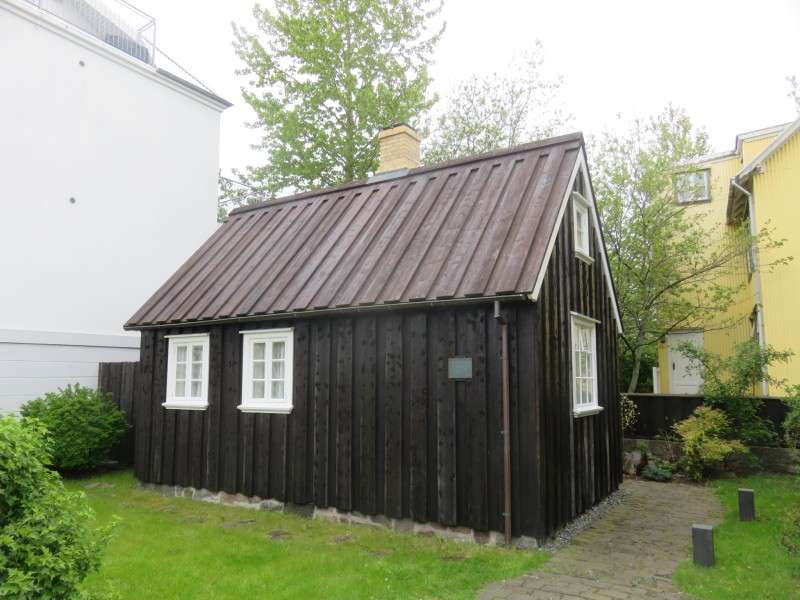Reykjavík is the capital of and largest city in Iceland. Miðbær ("Central Town" in English) is Reykjavík's central business district. It is the political, economic, religious, and cultural center of Iceland.
Miðbær sits on the original town settlement, dating back to Viking times. In fact, the settlement from 874 AD is said to be the original settlement in Iceland. For over 900 years, Reykjavík was simply a farmstead. In the mid-1700s, Skúli Magnússon established woolen workshops, which lead to a small community growing up around the farm. In 1786, the Danish government granted Reykjavík a town charter. The charter opened up trade, which spurned business and development. In 1798, Alþingi, the national assembly, moved to Miðbær from Þingvellir. It was abolished in 1800, but was re-established in 1845 in Reykjavík.
With Alþingi located in Reykjavík in 1845, just a block from the original farmstead site in Miðbær, Reykjavík became the center of Iceland and became Iceland's link with Denmark. With home rule and then full independence, Reykjavík continued to grow, with Miðbær serving other city neighborhoods and the surrounding suburbs.
Looking across Tjörnin ("the pond") at Miðbær.
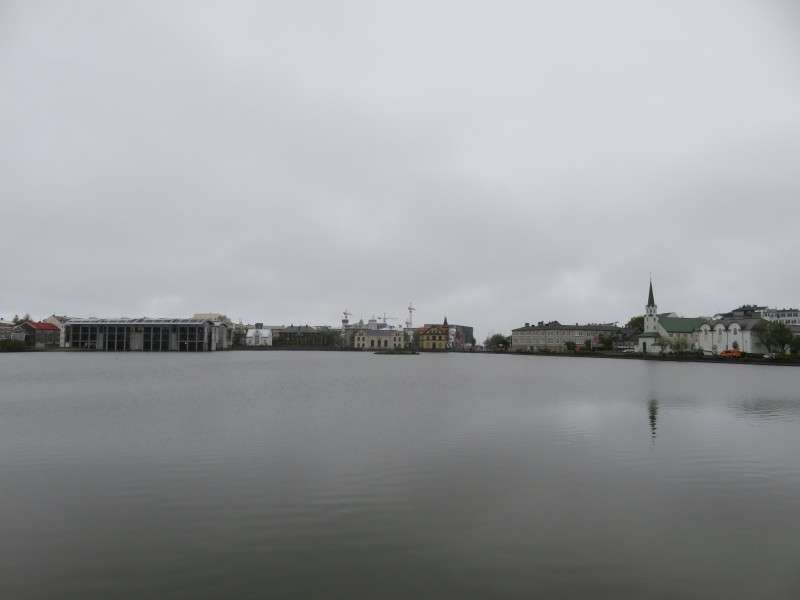
Ráðhús Reykjavíkur (City Hall), on Tjarnargata along Tjörnin.
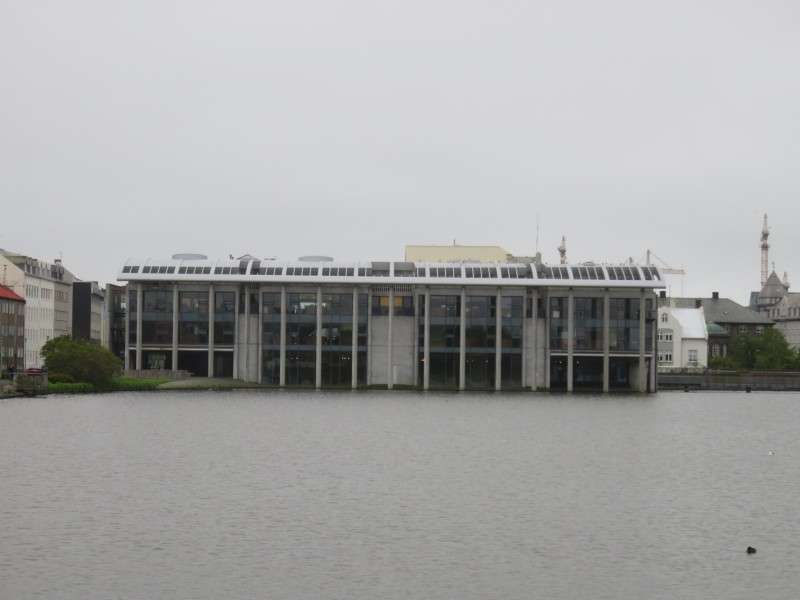
The city hall was built in 1992.
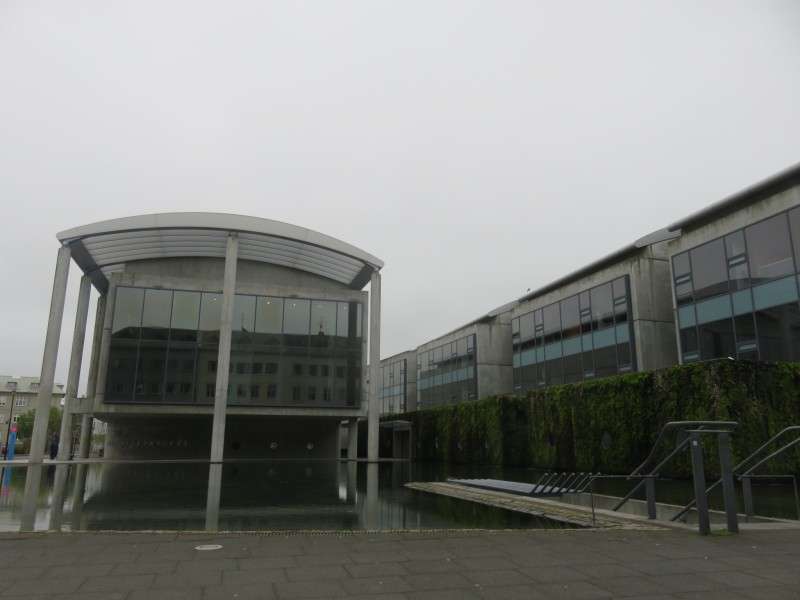
Alþingishúsið, on Kirkjustræti. The building is the home of Alþingi, which is the parliament of Iceland.

Alþingishúsið was built in 1881. The walls are of gray dolertie stone from Skólavörðuholtið, the small hill east of Tjörnin. The Alþing was formed in 930, and is the oldest surviving parliament in the world.

Dómkirkjan í Reykjavík, on Templarasund. The church was built in 1796, and is the oldest church in Reykjavík. It is the mother church of the Evangelical Lutheran Church of Iceland, and the seat of the Lutheran Bishop of Iceland. The National Anthem of Iceland was first sung here in 1874.
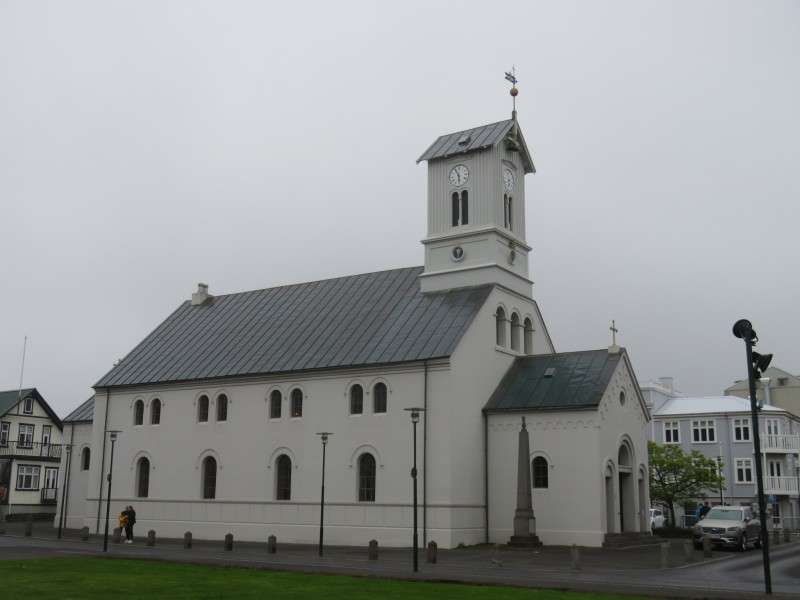
The Jón Sigurðsson statue, in Austurvöllur. Austurvöllur was originally a hayfield, and a place where rural Icelanders rested when in Reykjavík. The statue was designed by Einar Jónsson, and dedicated in 1931. Sigurðsson was a member of Alþing who advocated for greater Icelandic self-rule, and is a founding father of the nation.
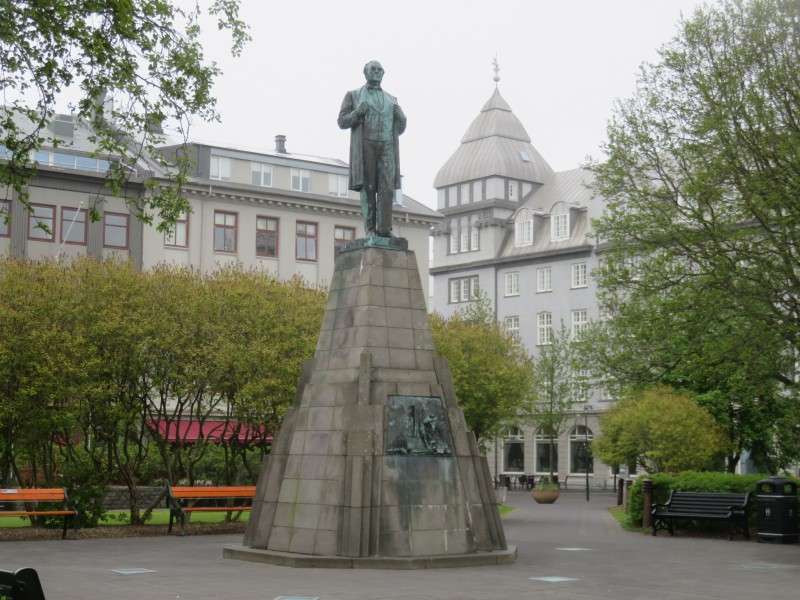
Buildings on Thorvaldsensstræti, facing Austurvöllur.
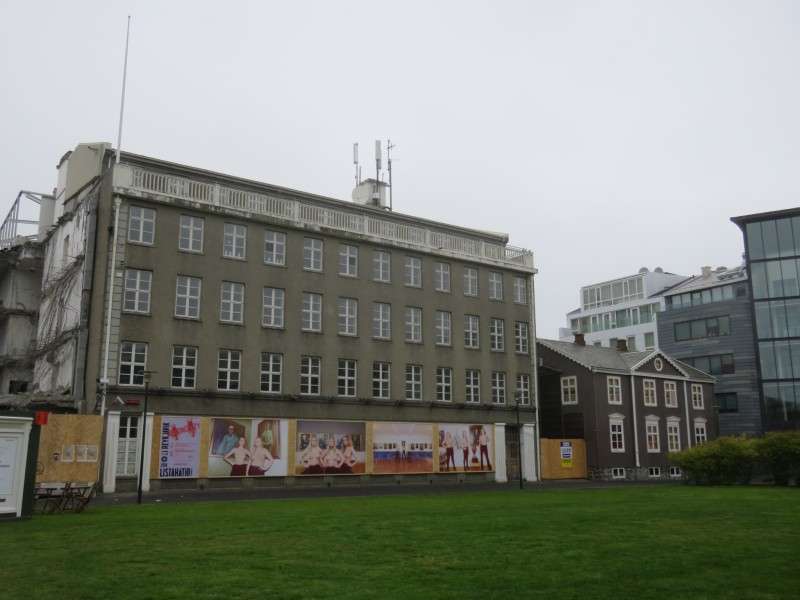
Kvennaskóli Þóru Melsteð (Þóra Melsteð Girls' School) on Thorvaldsensstræti, facing Austurvöllur. The school was built in 1878, and was the first secondary school for girls in Iceland.
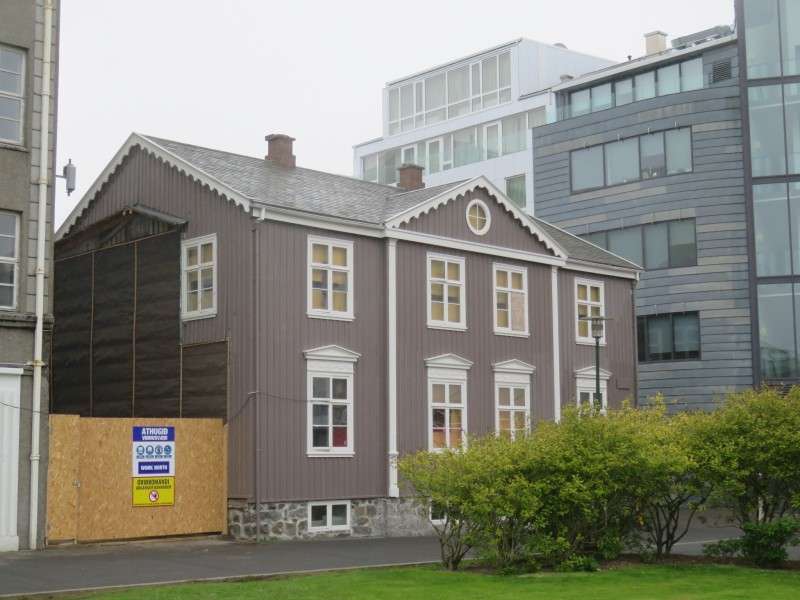
Businesses on Vallarstræti, facing Austurvöllur. These businesses reflect where many of Iceland's tourists come from, and Iceland's growing international taste, with an American burger bar and British pub in the row of buildings.
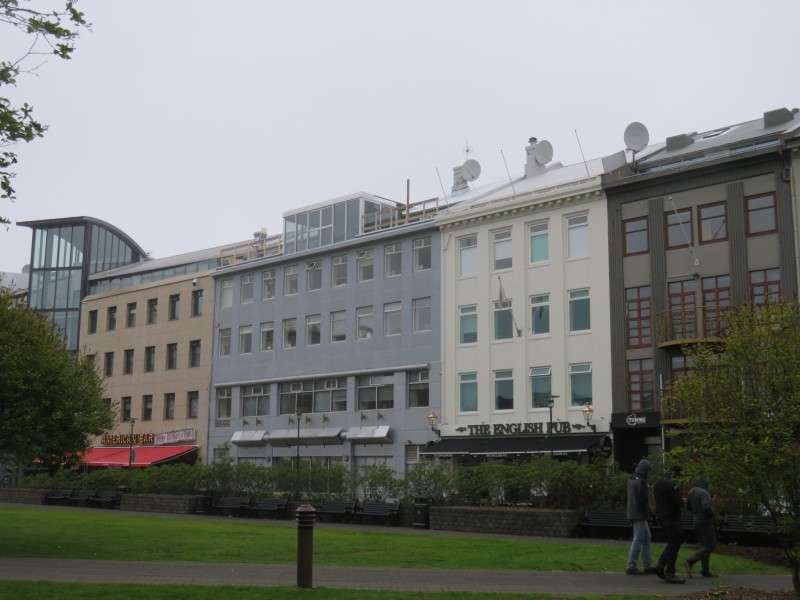
Buildings on Kirkjutorg (Church Square).

Þórshamar, on Templarasund. The office building was built in 1912, and was originally apartments.
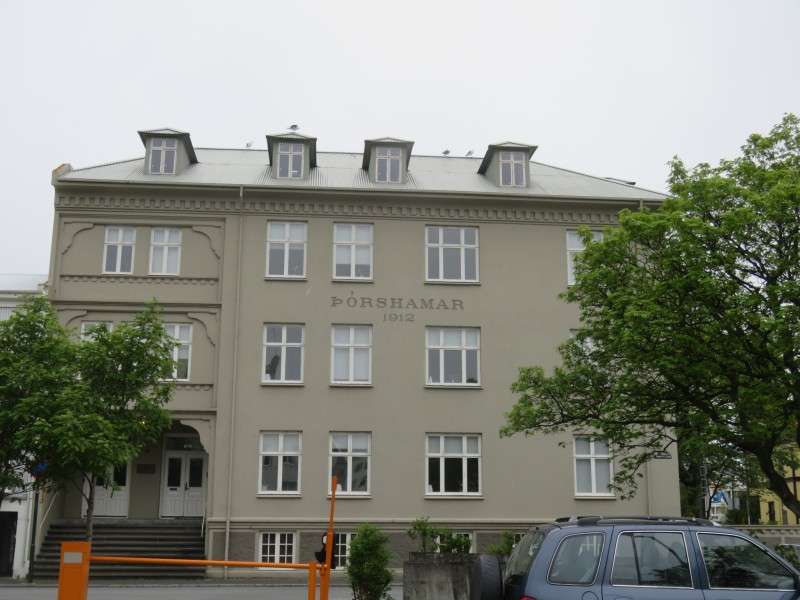
The Ólafur Þorsteinsson house, on Skólabrú (School Bridge). The house was built in 1912.

Hotel Borg, on Pósthússtræti (Post Office Street). The hotel was built in 1930, and was designed by Guðjón Samúelsson.
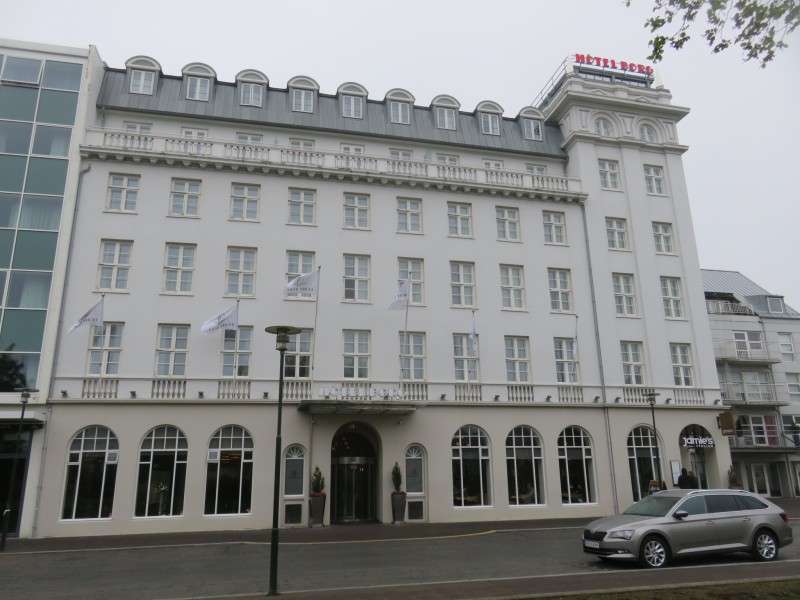
Reykjavíkurapótek (old pharmacy building), at Austurstræti and Pósthússtræti. The structure was built in 1917, and was designed by Guðjón Samúelsson.
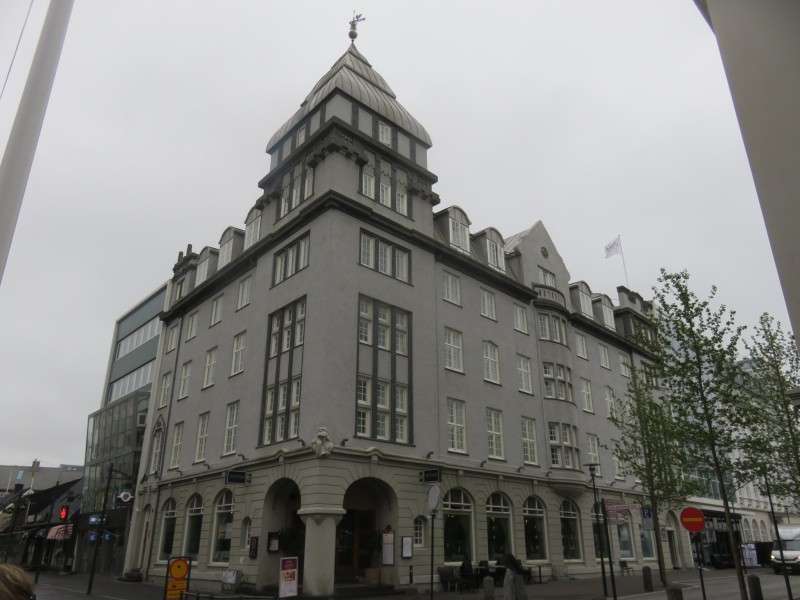
The building began a construction boom building began boom that transformed Reykjavik into a bustling city.
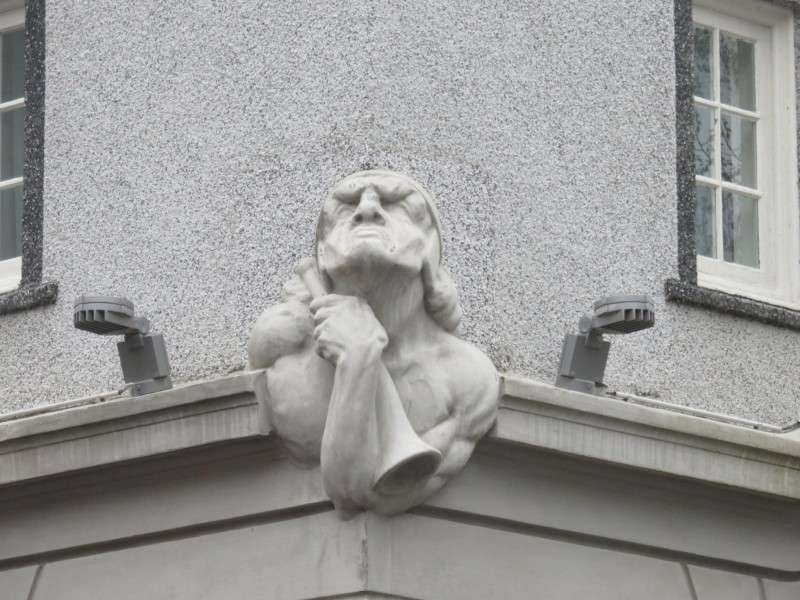
Landsbankinn, on Austurstræti (East Street). The structure was built in 1899, with another floor added in 1923, and houses the National Bank of Iceland.

The Jacobsen Store, on Austurstræti. The store was built in 1921.
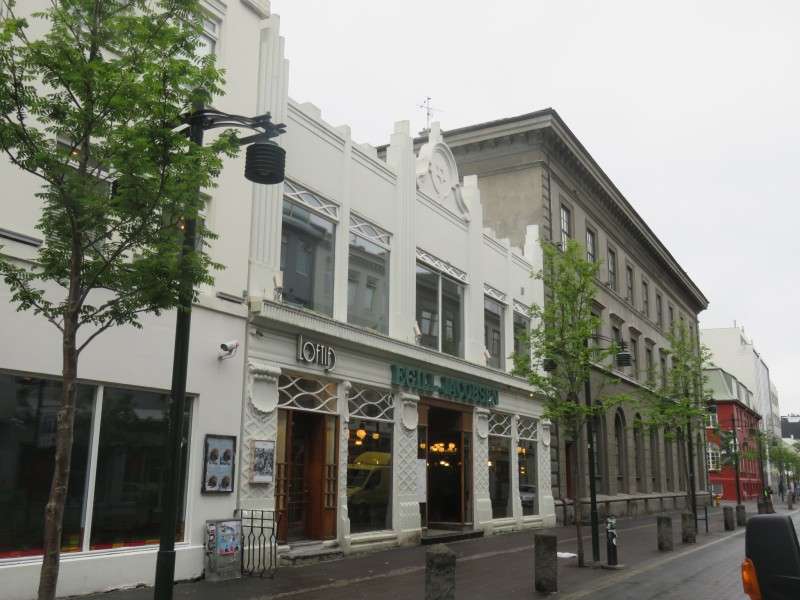
An old house on Austurstræti.
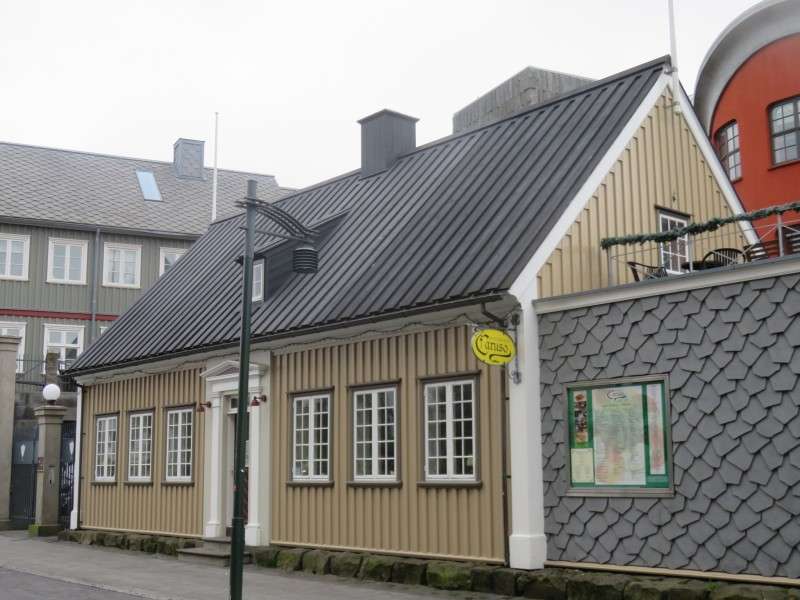
Pósthúsið (Post Office), on Pósthússtræti (Post Office Street). The structure was built in 1882 as a school, and became a post office in 1898.
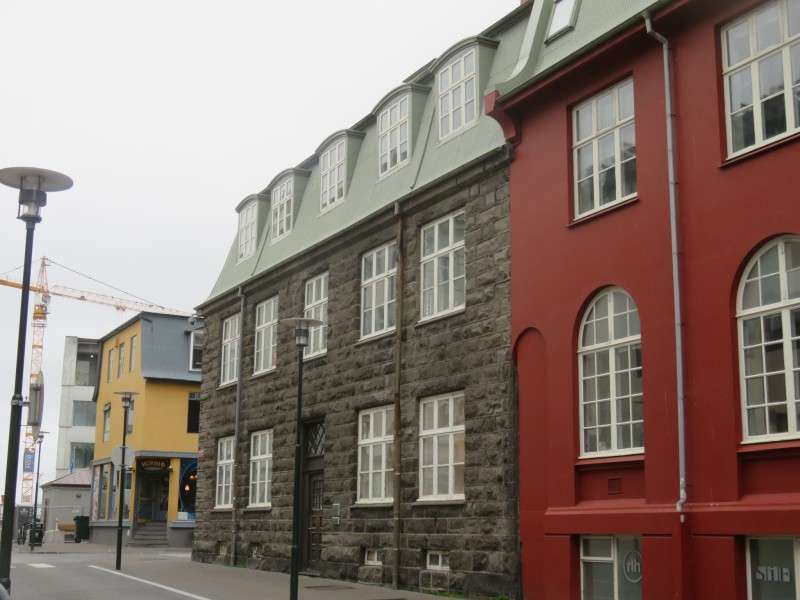
Hitt Húsið, on Pósthússtræti. The structure was built in 1914 as an addition to the post office next door.
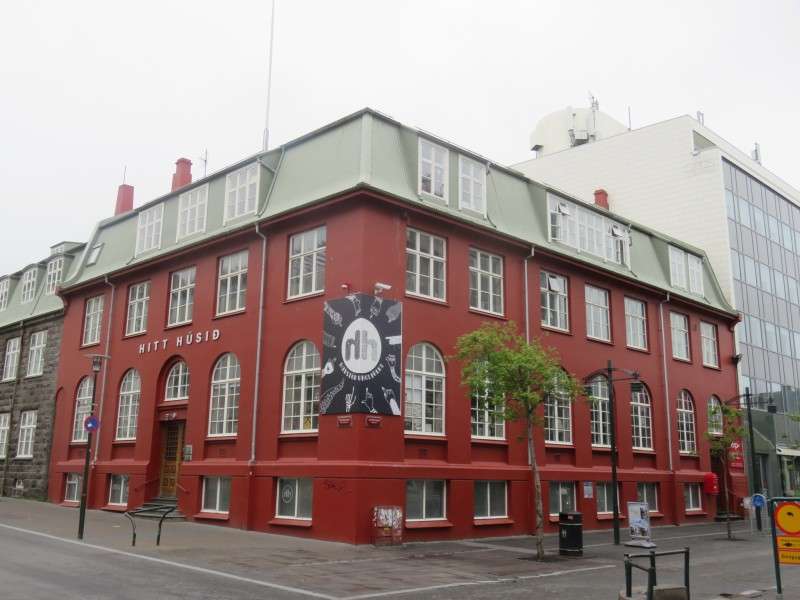
Houses on Kirkjustræti (Church Street).
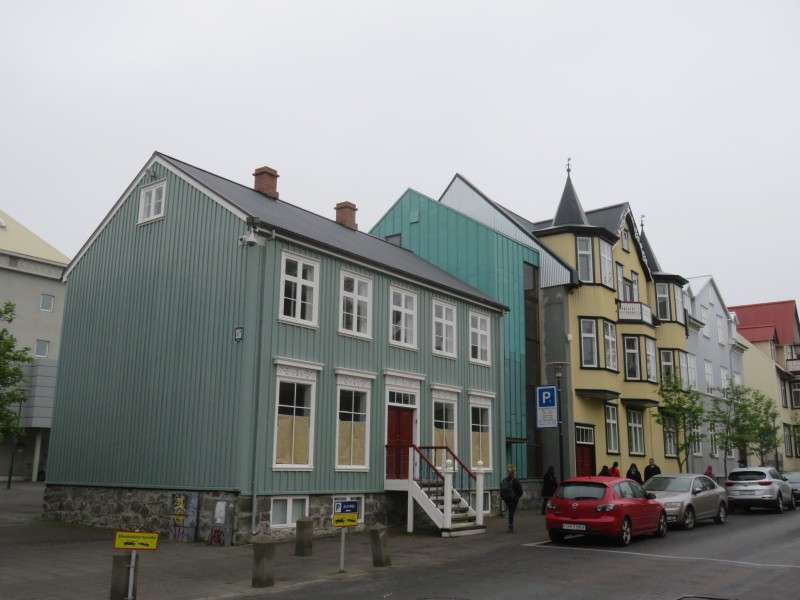
The Skúli Magnússon statue, in Víkurgarður, off of Kirkjustræti. The statue was dedicated in 1953. Magnússon was national sheriff of Iceland, and reformed the Danish monopoly on trade with Iceland. He is called the "Father of Reykjavík" for establishing factories here in the 1750s, to bypass the Danish monopoly and embargo, thus turning Reykjavík from a farmstead to a town.
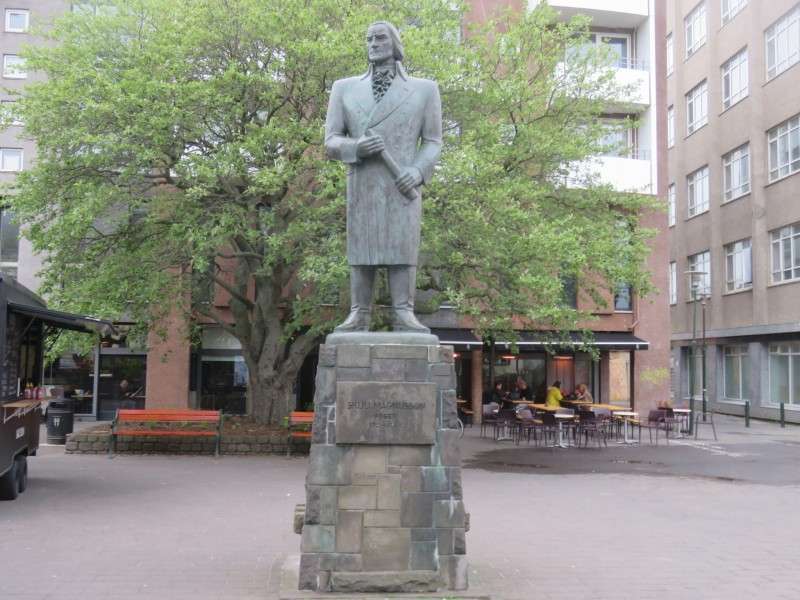
Landnámssýningin, or the Settlement Exhibition, on Aðalstræti. The museum opened underneath the hotel that was built in 2001.
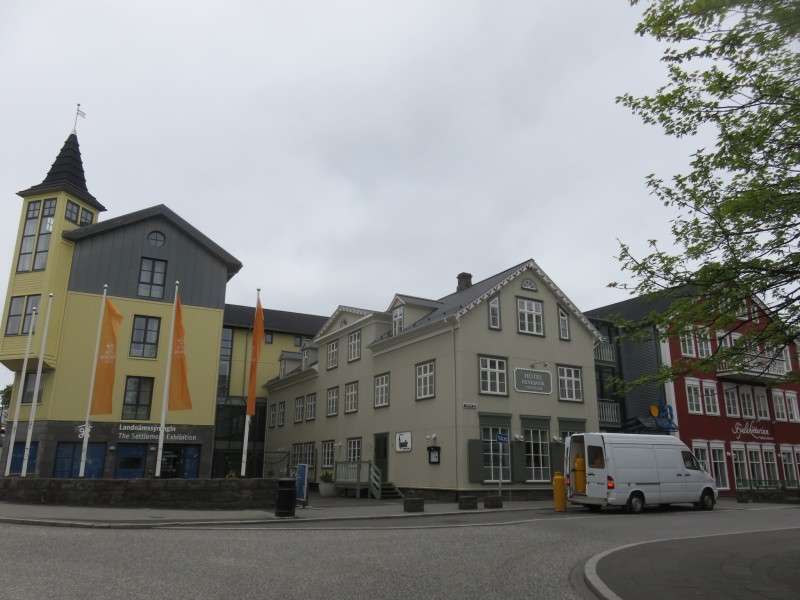
Aðalstræti (Main Street) is the oldest street in Reykjavík. The street formed when farmers would walk to the sea from here to get to their fishing boats back hundreds of years ago. This historic street was the beginning of Reykjavík, and lead to the discovery of the city's beginnings, which became part of the museum.

Inside the Settlement Exhibition is a Viking Age longhouse. The longhouse was built around 930.
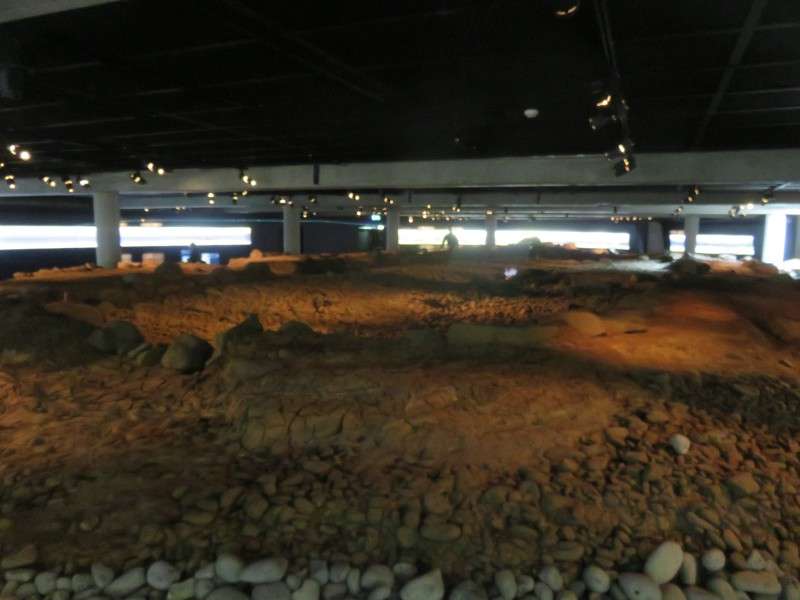
The longhouse was inhabited until around 1000. The longhouse, including its entrance here, was excavated in 2001.
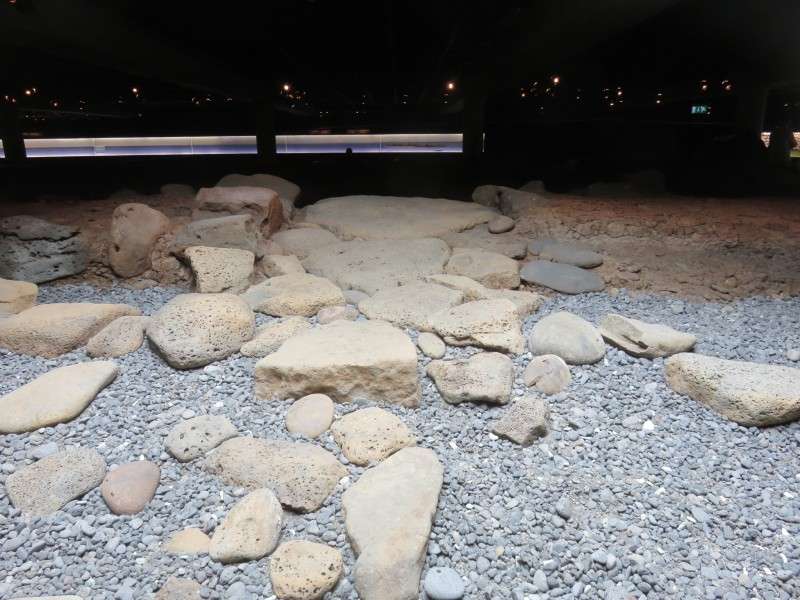
Also in the museum is an excavated turf wall. The wall was constructed around 871, and is the oldest remnant of human habitation in Iceland.
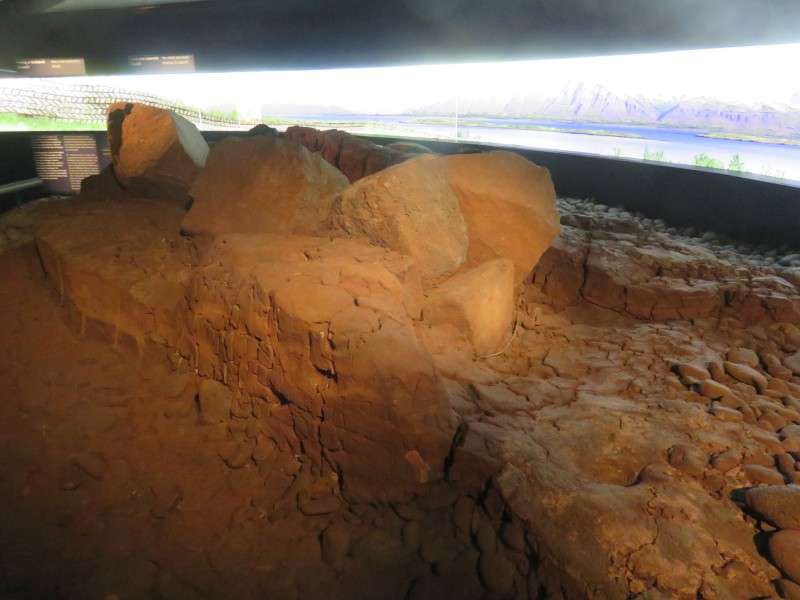
Fjalakötturinn, on Aðalstræti. The 1893 building was the first structure in Iceland specifically built as a theater.

The Þetta House, on Aðalstræti. The house was built in 1762 and is the oldest house in Reykjavík's city center. It was originally the home of the director of the manufacturing workshop when free trade began in the city. It became a museum in May 2018, after being a restaurant for several years.

Ingólfstorg, along Aðalstræti. The square was built in 1994.
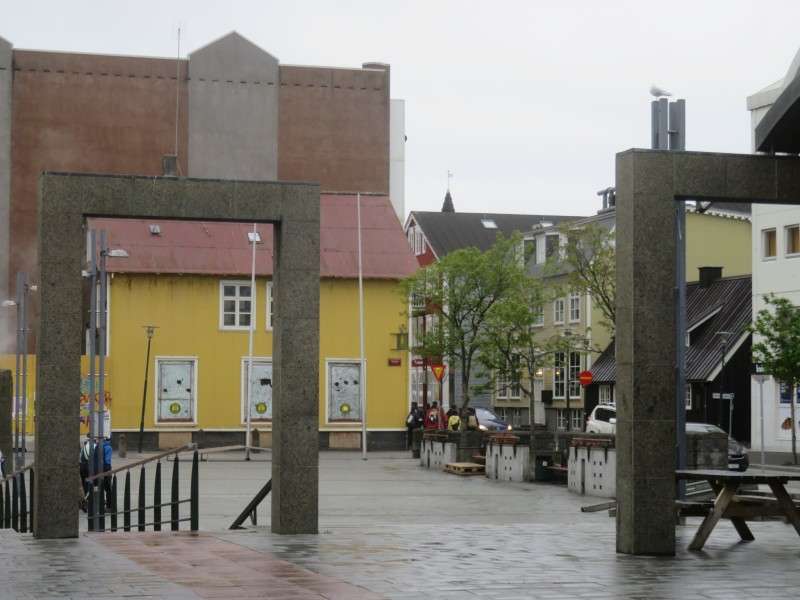
Pylsuhúsid, or "Hot Dog House", in Ingólfstorg (Ingólfur Square).
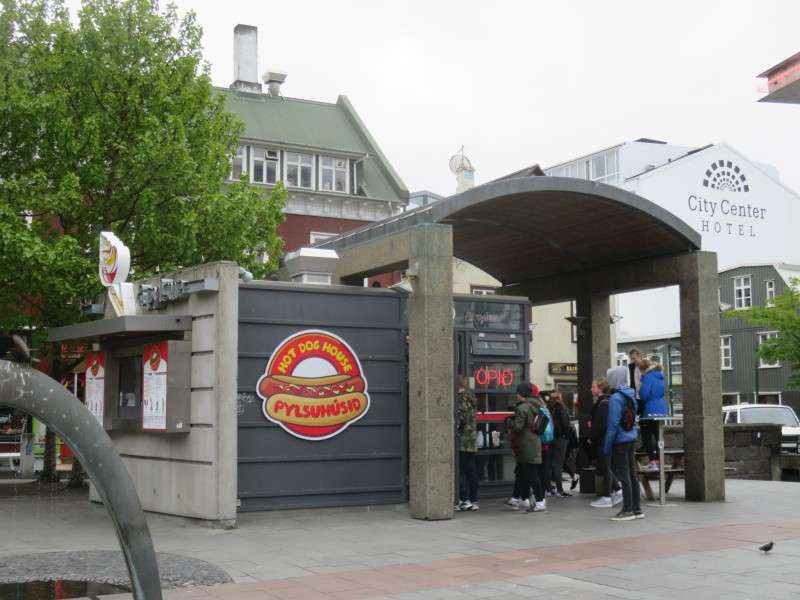
Ingólfsnaust, on Vesturgata. The structure was built in 1855, and was rebuilt in 2005.
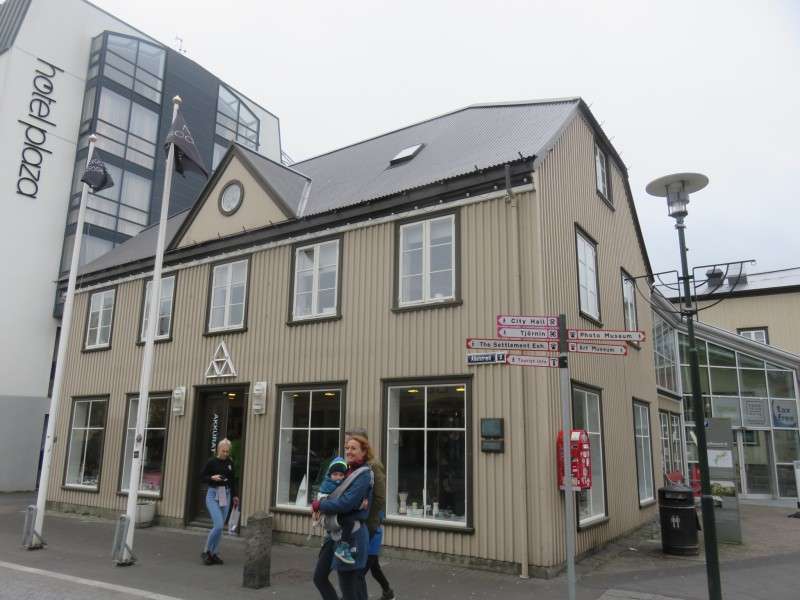
Buildings on Vesturgata. On the right is a power transformer station, built in 1921.
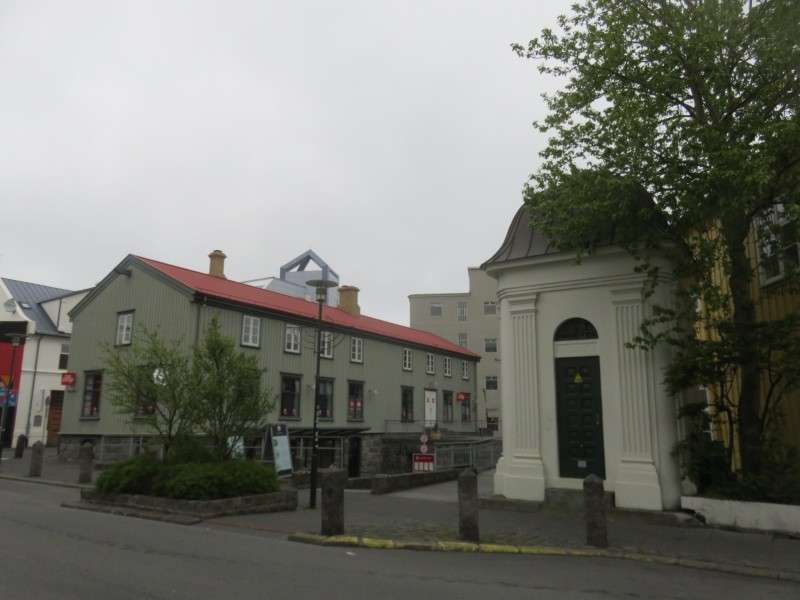
Buildings on Vesturgata (Western Street).
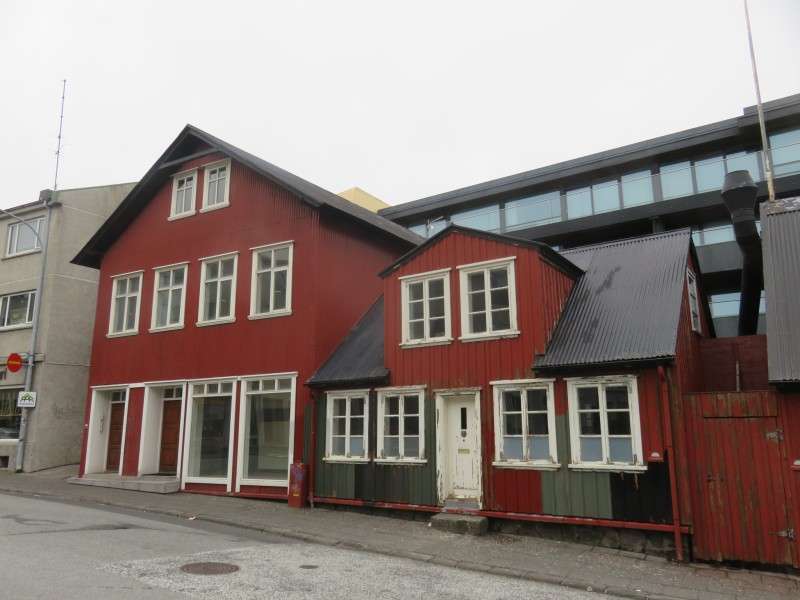
Tollhúsið (Customs House), on Tryggvagata. The building was completed in 1970.

The structure features a mural depicting life along the harbor before the building and nearby highway were built.
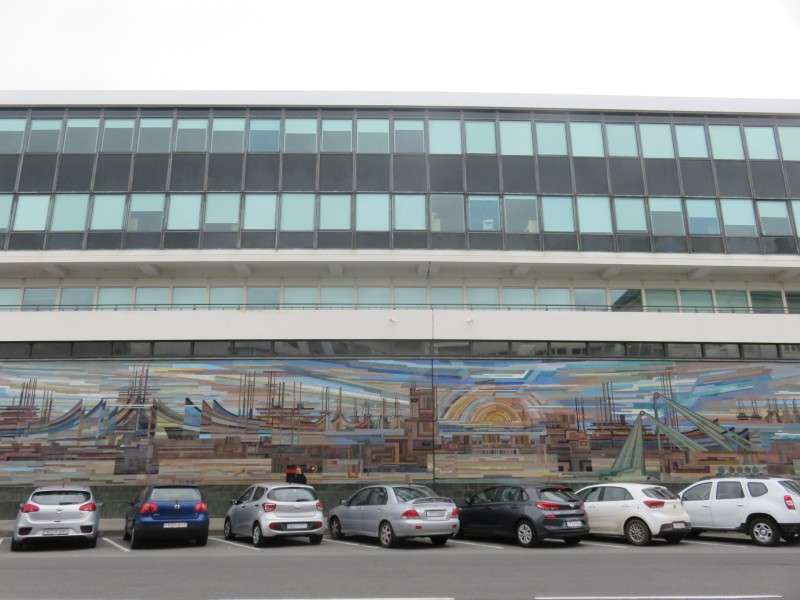
Hafnartorg (Harbor Square) mixed-use construction along Tryggvagata. Construction finished in December 2018.
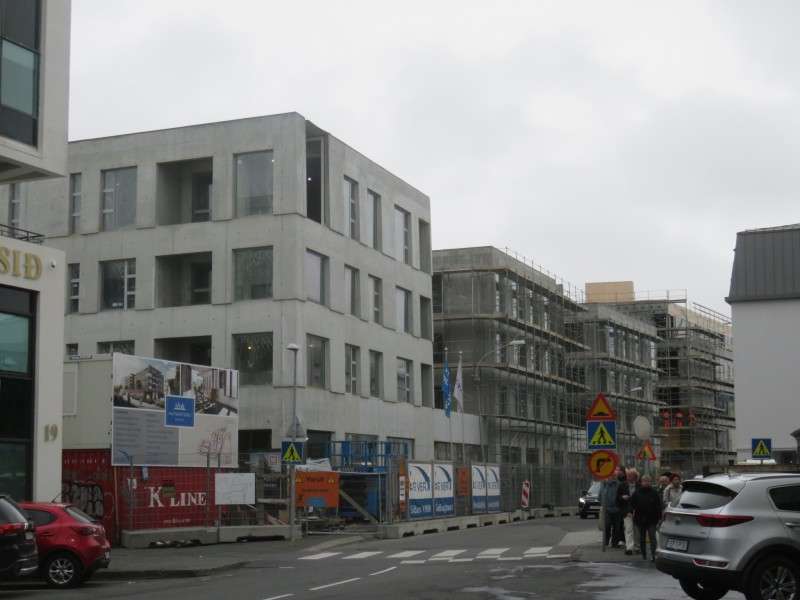
The Eimskip Head Office, on Pósthússtræti. The office was built in 1919 for Eimskipafielag Islands (Icelandic Steamship Company), and is now a hotel.
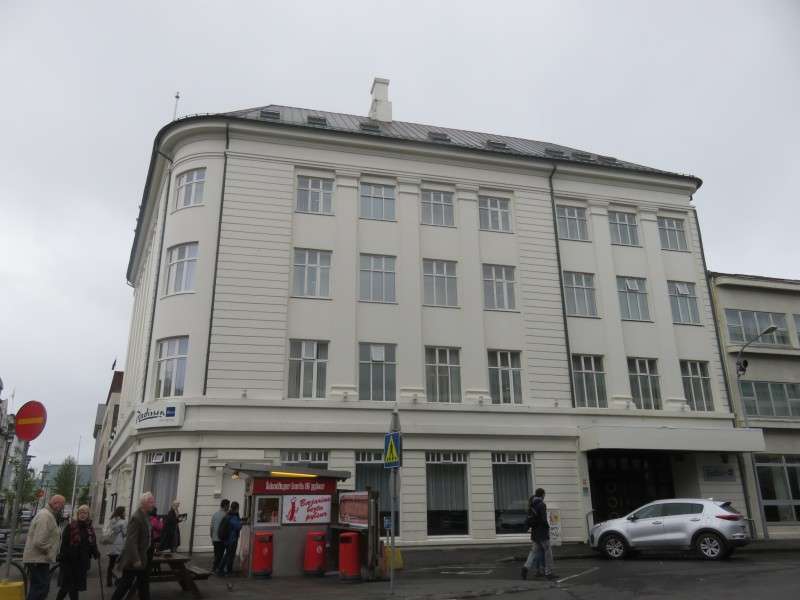
Bæjarins Beztu Pylsur ("The Best Hot Dog in Town"), on Tryggvagata. The hot dog stand has been open since 1937. It is one of Iceland's most famous food attractions. The stand was named the best hot dog stand in Europe in 2006.

Buildings on Geirsgata. On the right is the steam locomotive Minør, which was built in 1892 and used in Reykjavik in 1913 on Iceland's first railway, to bring stones from a quarry to the harbor for a breakwater.

Reykjavík Harbor, facing north towards the Atlantic Ocean. The harbor was built between 1913 and 1917. Most of Iceland's fishing trawler fleet sails from here, to catch cod. Whale watching tours also leave from this harbor.
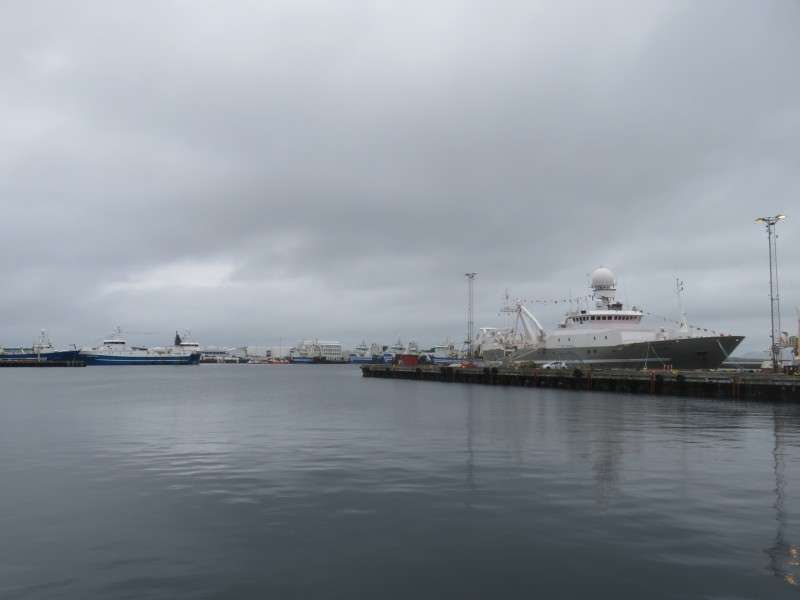
The entrance to the harbor is marked on each side with lighthouses. On the left is Norðurgarði, and on the right is Ingólfsgarði.
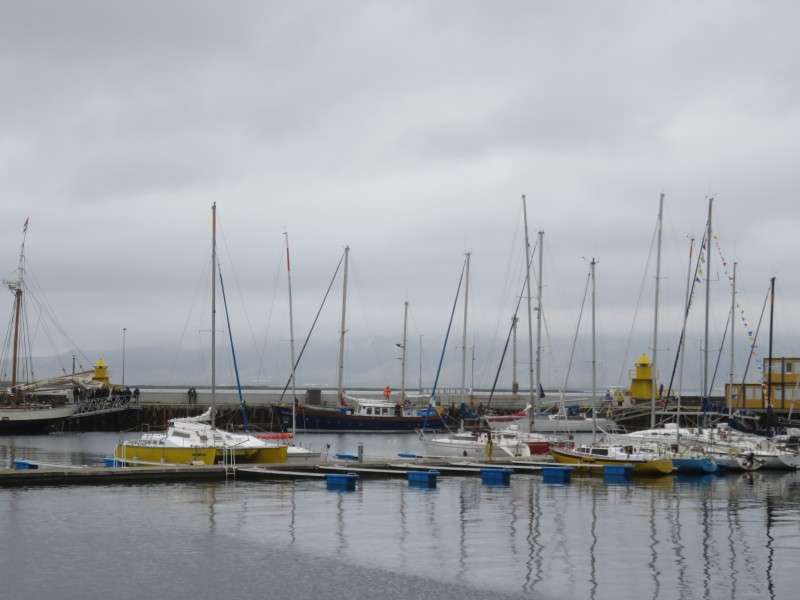
Harpa Concert Hall, on Kalkofnsvegur (Lime Kiln Road).
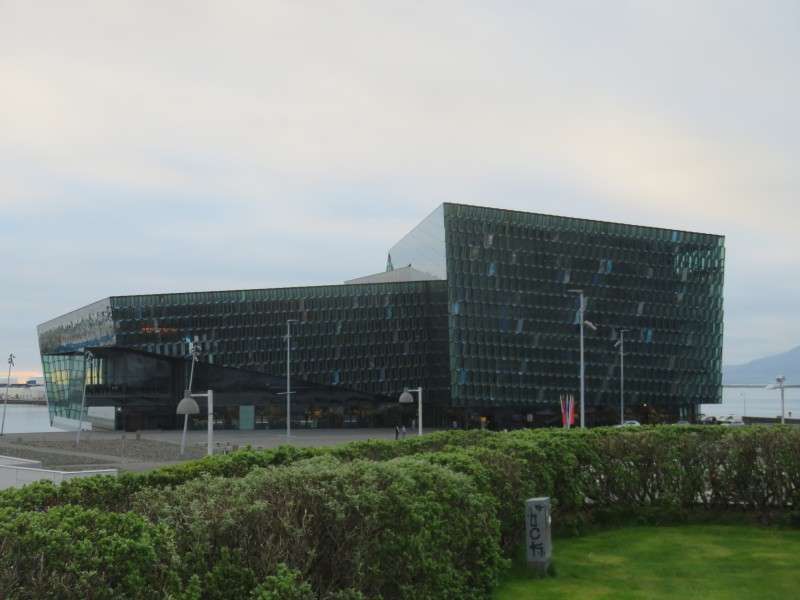
Harpa functions as a performing arts center, primarily for the Iceland Symphony Orchestra, and as a conference center.
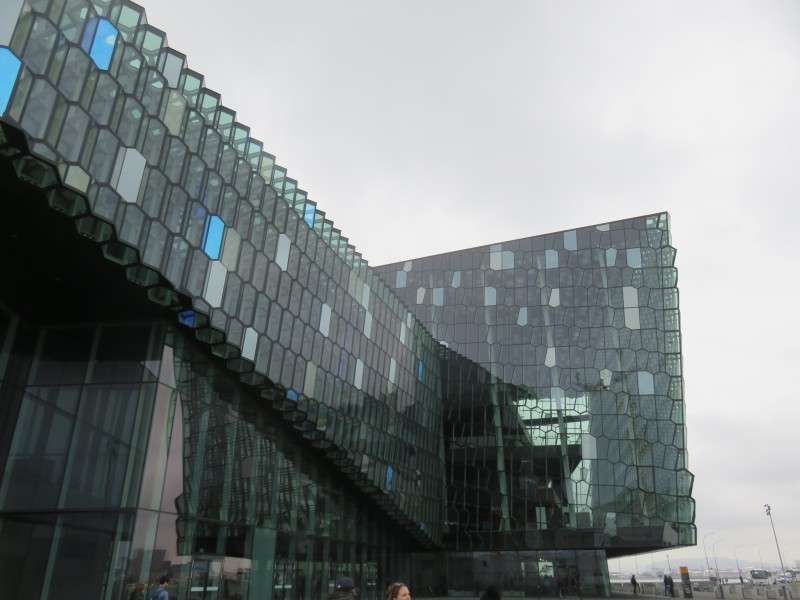
The concert hall opened in 2011.
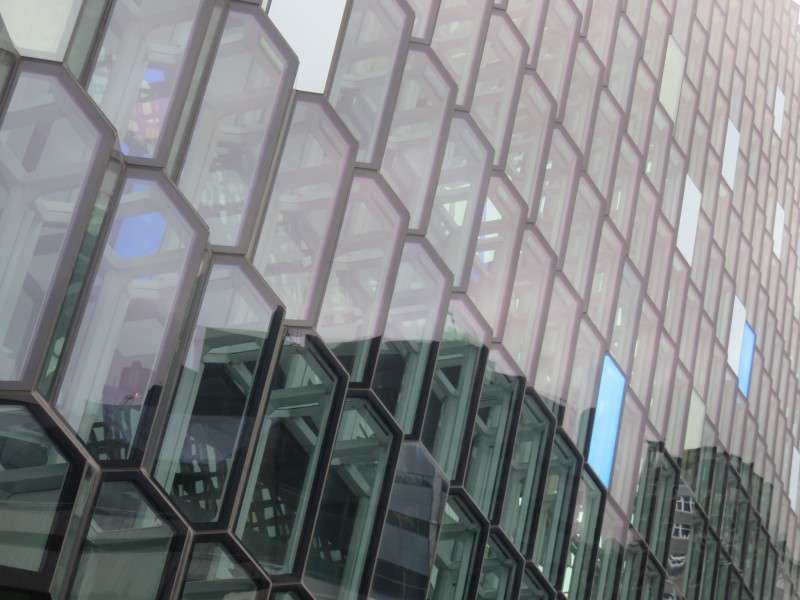
Harpa's facade is steel framework clad with geometric-shaped glass panels that are meant to resemble basalt rock formations.
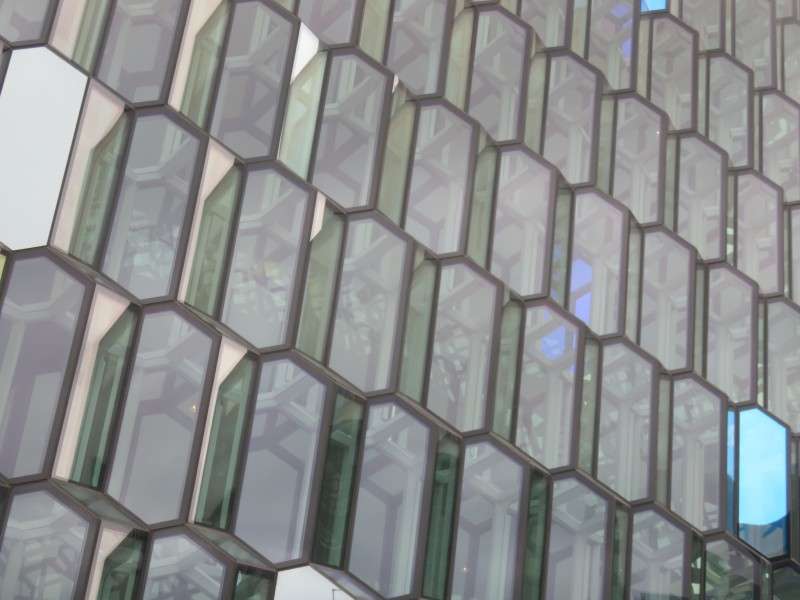
Residential buildings on Skúlagata.
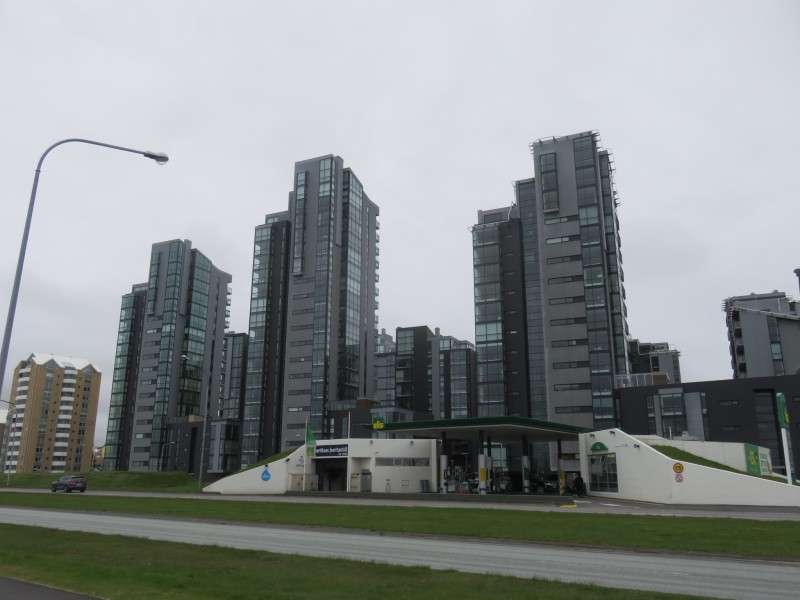
Sólfar (Sun Voyager), on Sæbraut. The sculpture was dedicated in 1990, and conveys the promise of undiscovered territory.
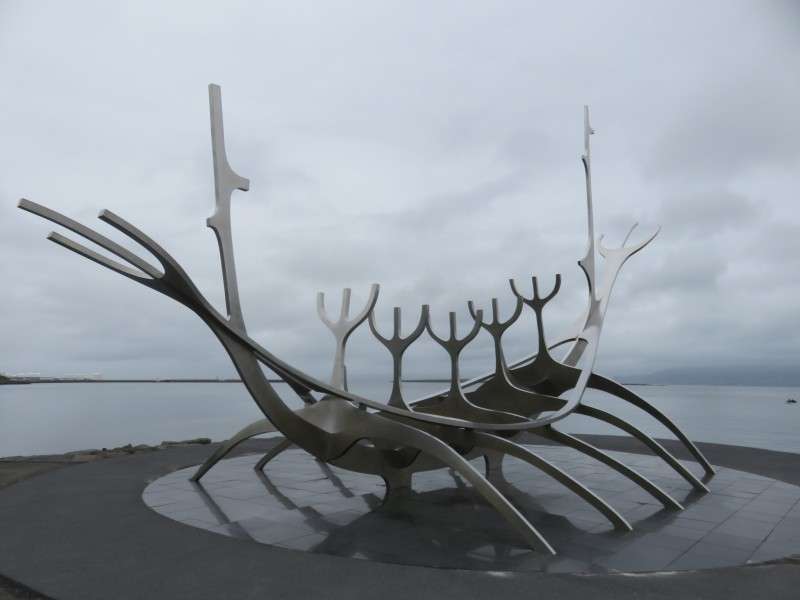
The Höfði House, on Borgartún. The house was built in 1909 for French consul Jean-Paul Brillouin. It was later the home of poet Einar Benediktsson. US President Ronald Reagan met Soviet Union General Secretary Mikhail Gorbachev here in the 1986 Reykjavík Summit, to discuss ending the Cold War.
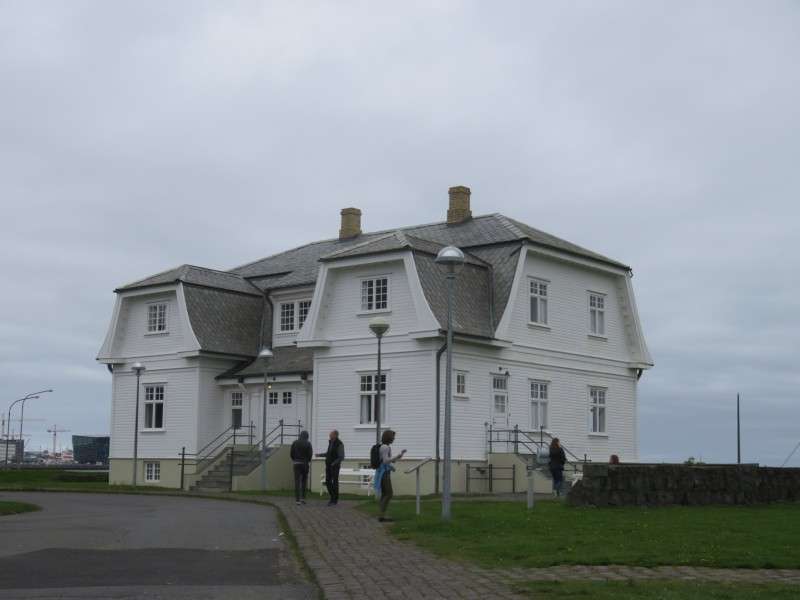
Next to the Höfði House is a statue of Einar Benediktsson. Benediktsson lived in the Höfði House from 1914 to 1917. The statue was dedicated in 1964, and was moved to the house in 2015.

The French Hospital, on Lindargata (Winding Street). The hospital was built in 1902 by the French, to serve their mariners fishing for cod in the waters west of Iceland. The hospital operated until 1927, and the building later became a school.
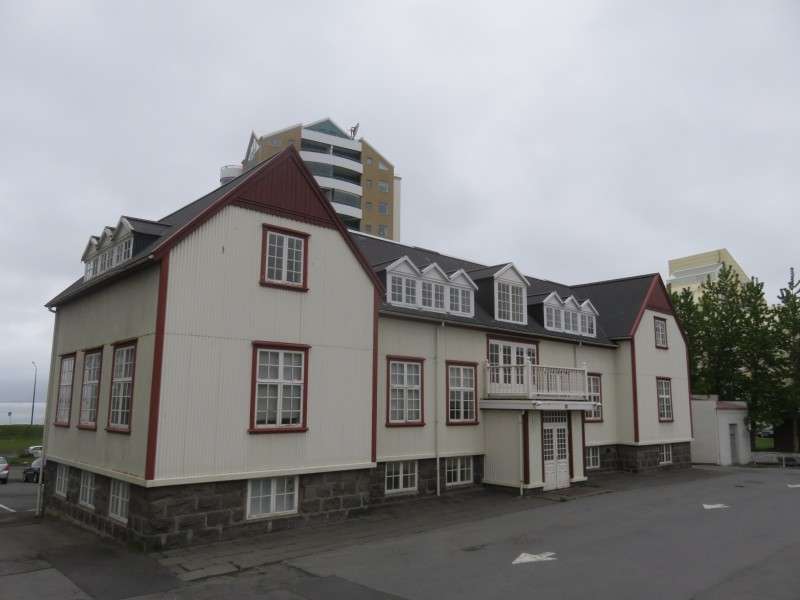
Houses on Hverfisgata (Neighborhood Street).
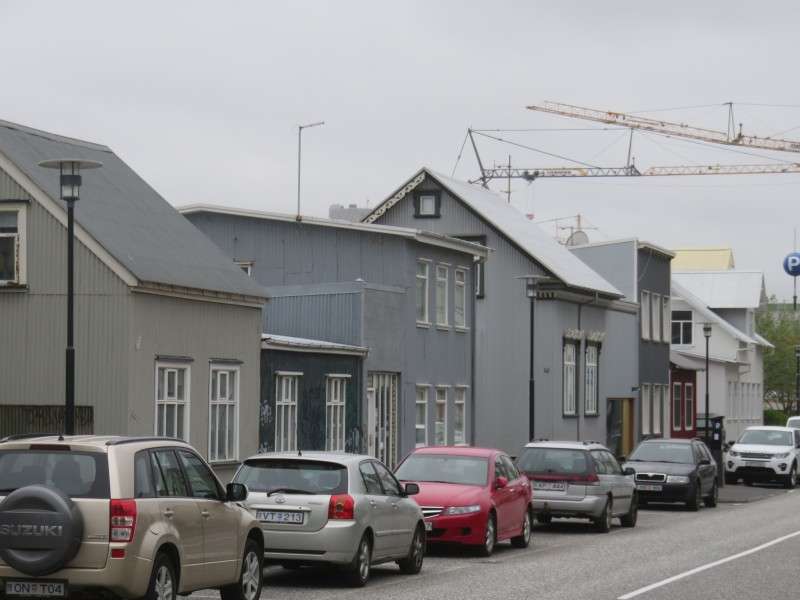
A building on Frakkastígur (French Lane).
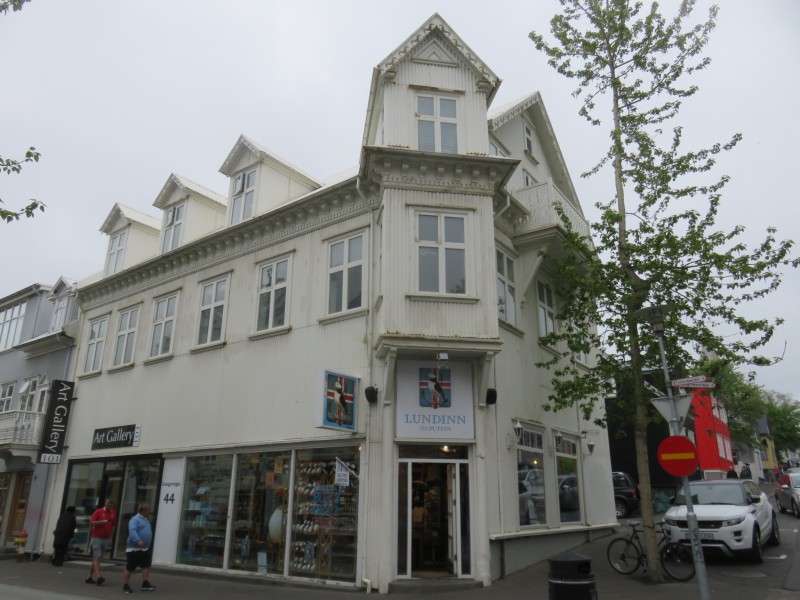
Looking east down Laugavegur, the main east-west road through the city center.
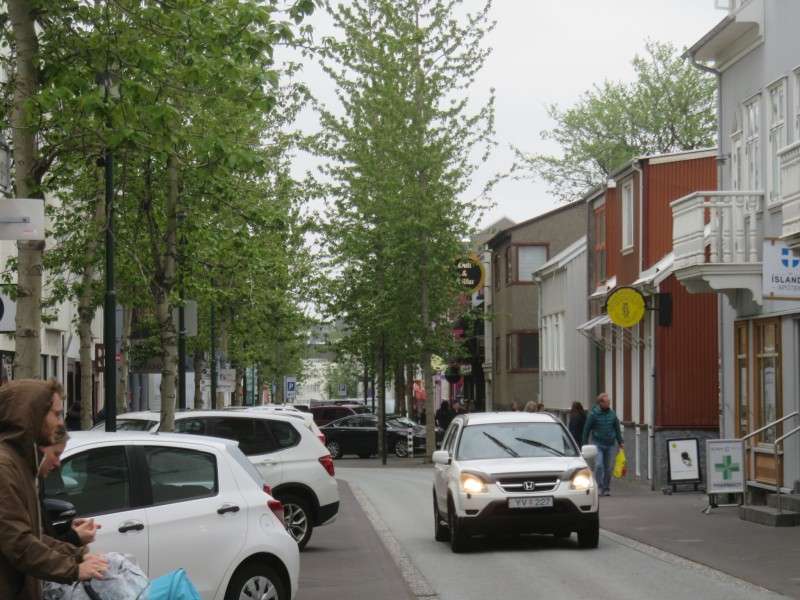
Looking up Frakkastígur at the Leif Erikson statue in front of Hallgrímskirkja.
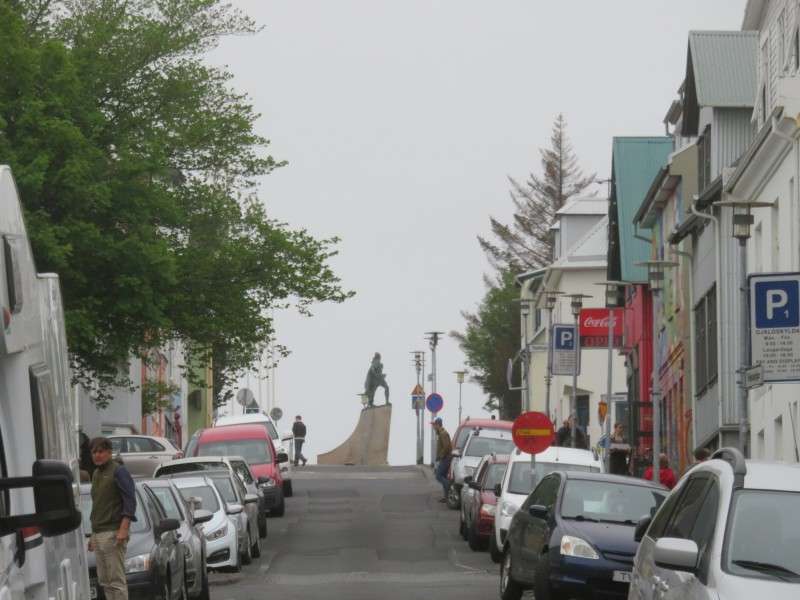
Houses on Frakkastígur.

Houses on Frakkastígur.
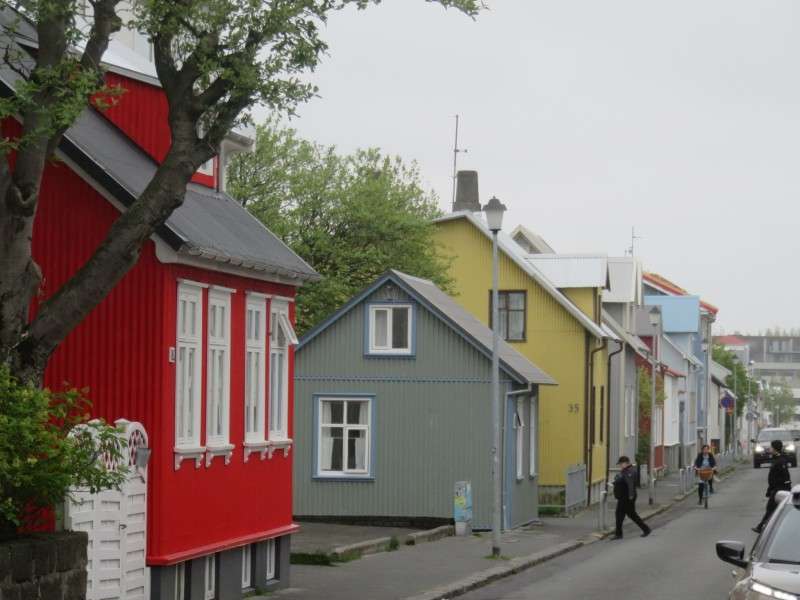
Street art on a building on Frakkastígur.
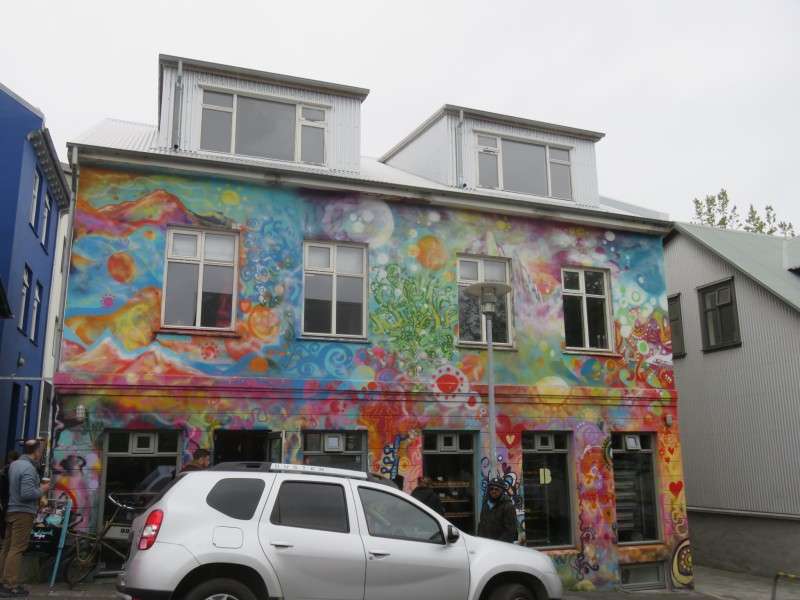
Houses on Frakkastígur.
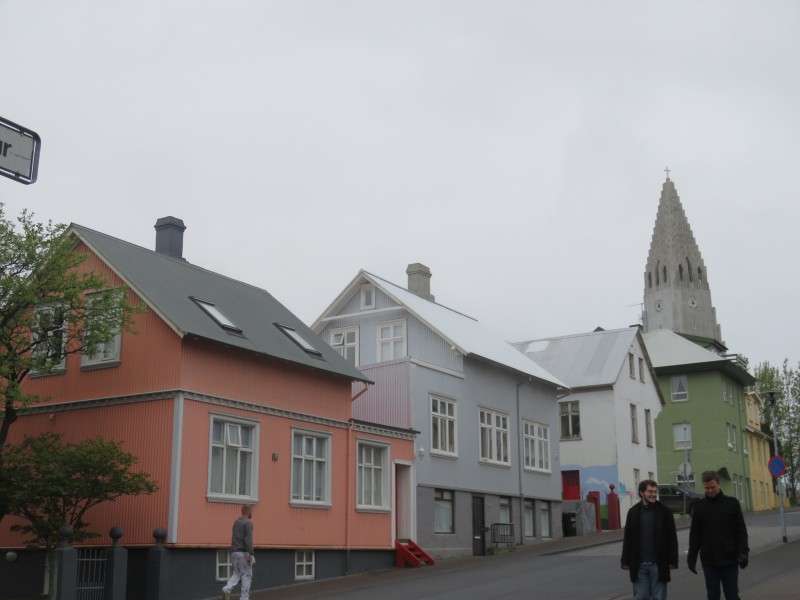
Hallgrimskirkja, on Hallgrímstorg.
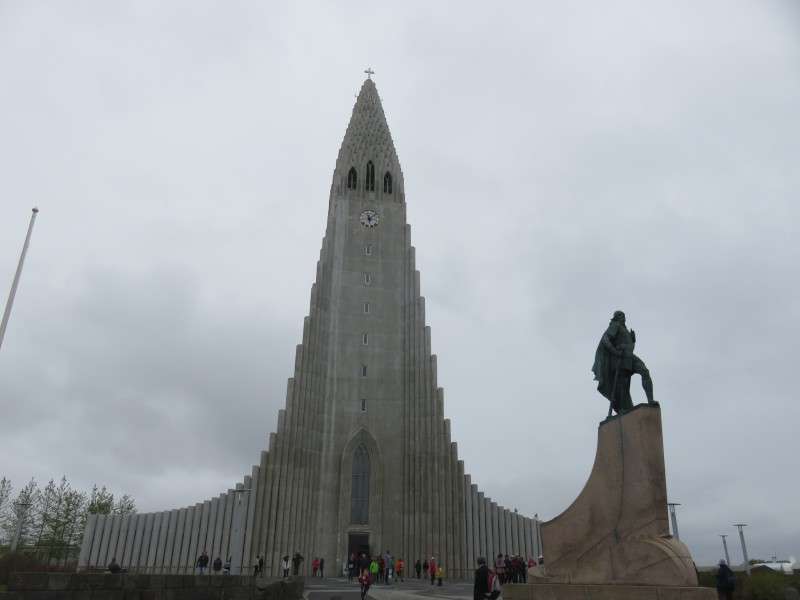
Hallgrimskirkja was built between 1937 and 1986, and was designed by Guðjón Samúelsson. The first part of the church was consecrated in 1948.
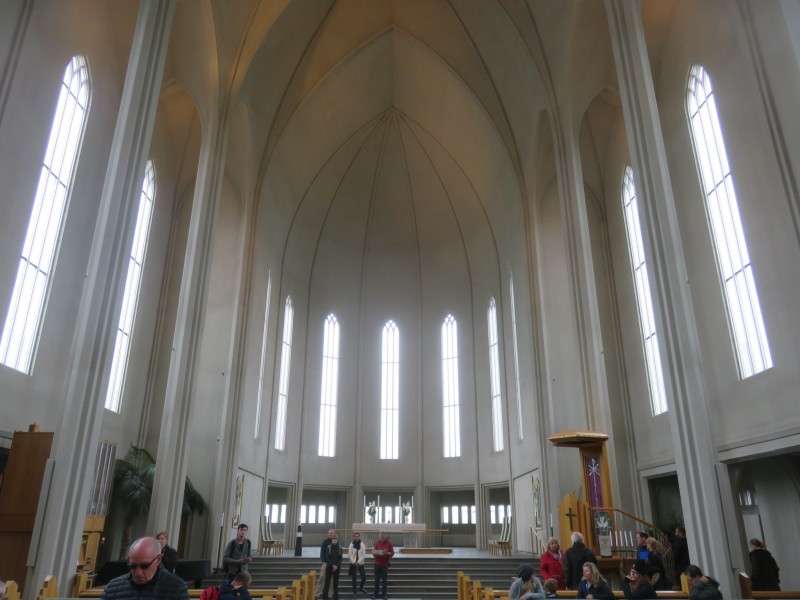
The organ was installed in 1992, and was imported from Germany.

The church is largely unadorned, being part of the Lutheran Church of Iceland.
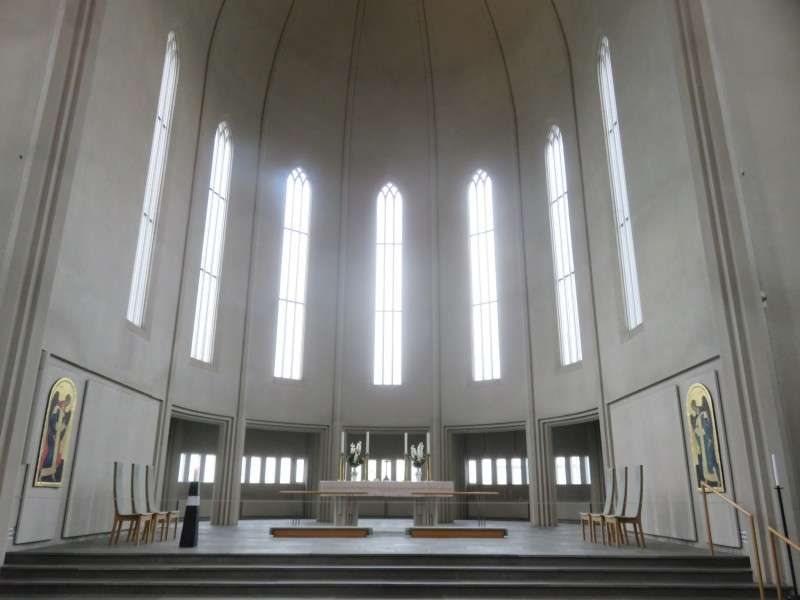
Near the top of the 244 foot (74.5 meter) tall church is an observation deck.

The observation deck provides 360° views of Reykjavík.
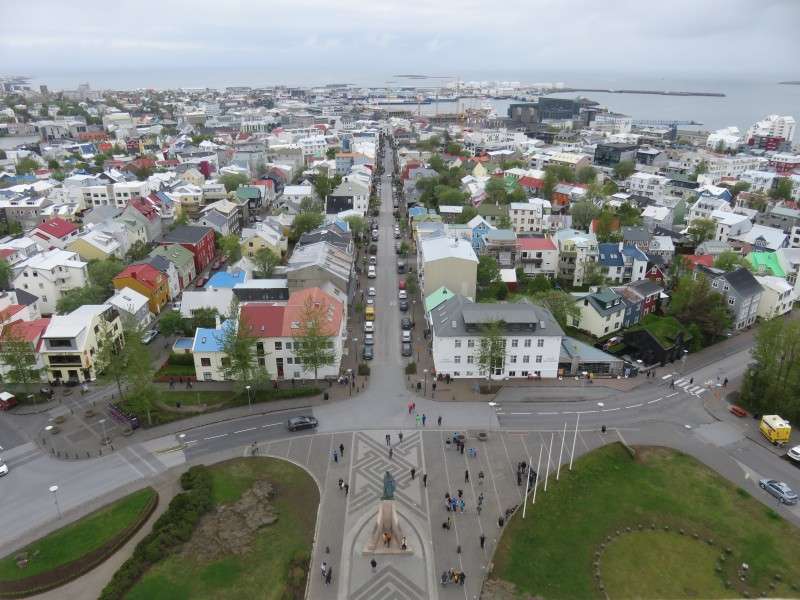
The most popular view for tourists and tourist agencies is that down Skólavörðustígur towards the harbor.
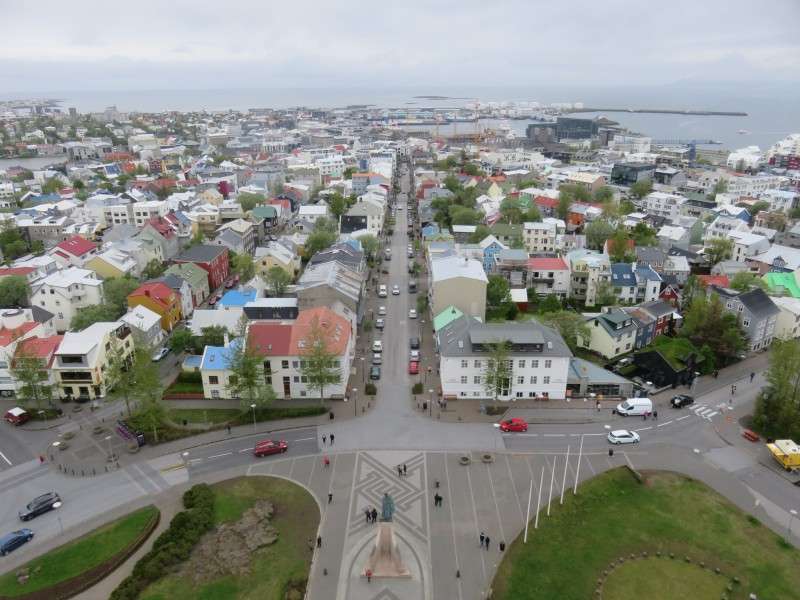
In front of Hallgrimskirkja is the statue of Leifr Eiríksson. The statue was dedicated in 1930, and was a gift from the United States, commemorating a millennium of the Alþing.
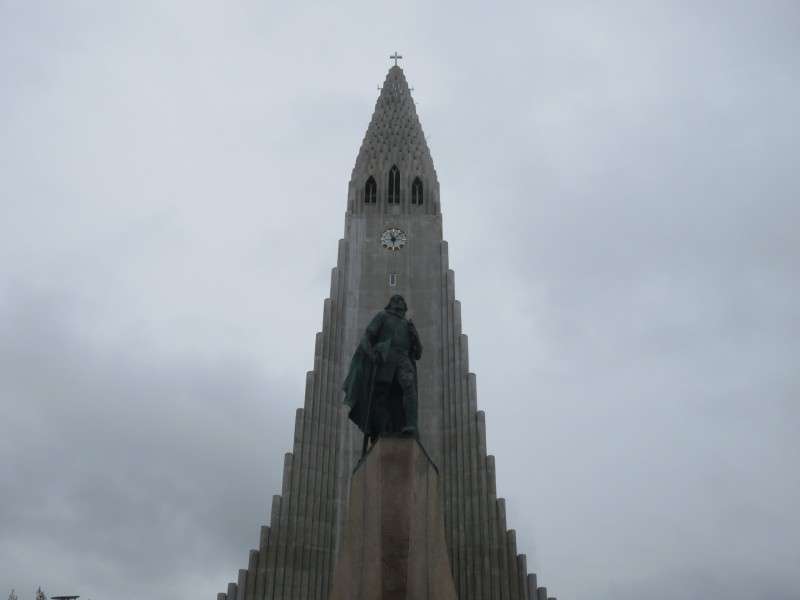
Listasafn Einars Jónssonar (Einar Jónsson Museum), on Eiríksgata. The museum was completed in 1923, after sculptor Einar Jónsson donated his works to Iceland on the condition that a museum be built for them. It was the first art museum in Reykjavík.
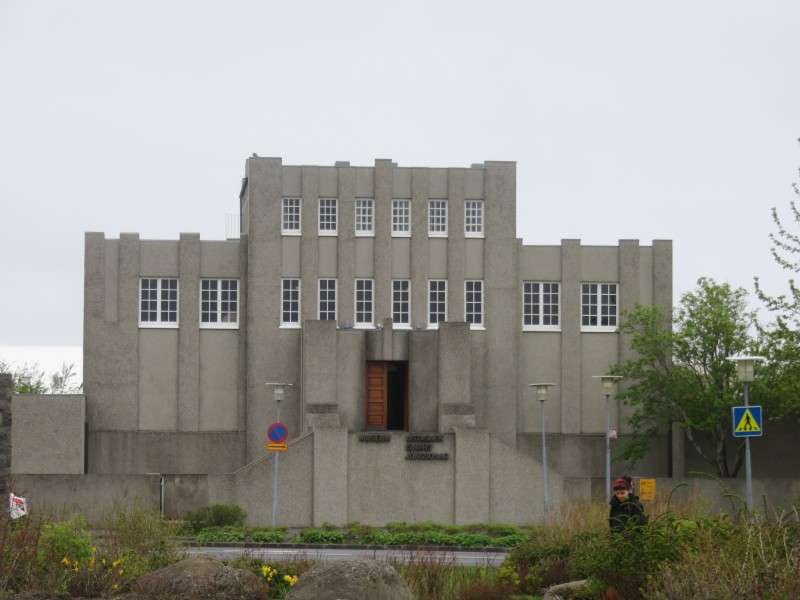
A house on Skólavörðustígur.
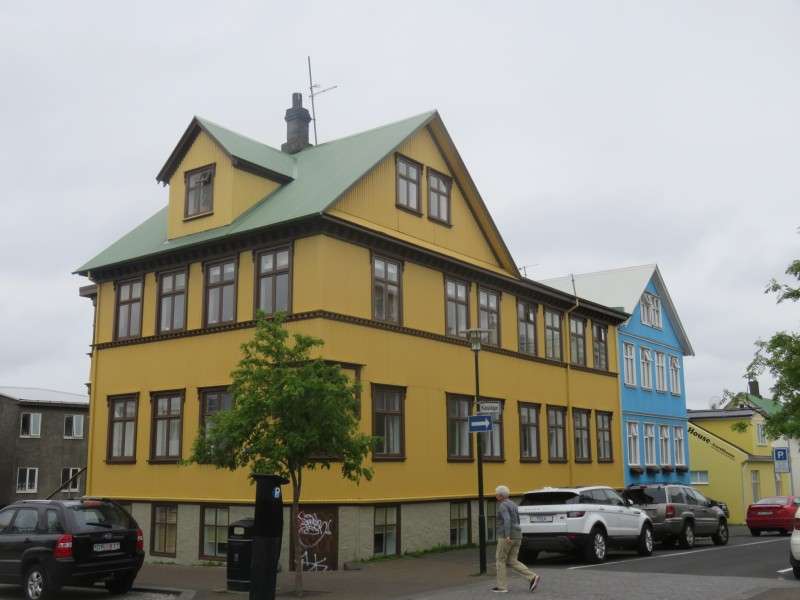
A house on Skólavörðustígur.
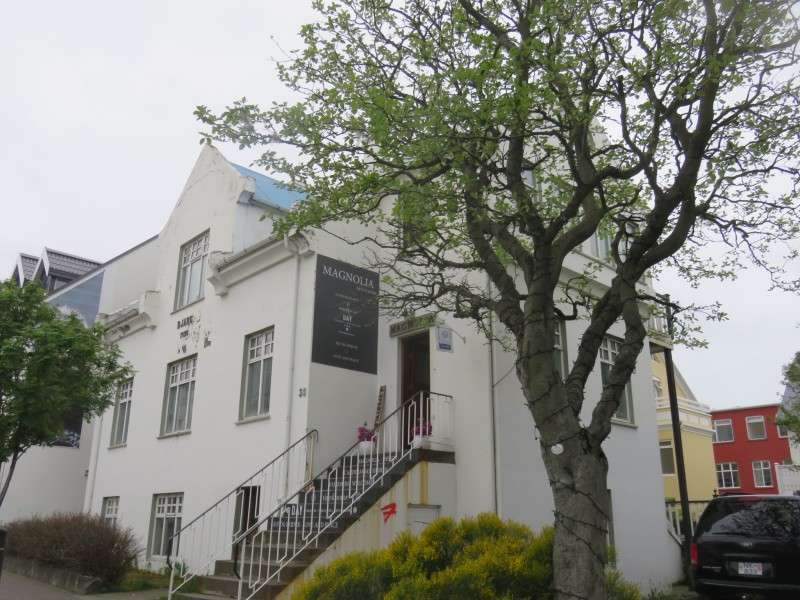
Houses on Skólavörðustígur.
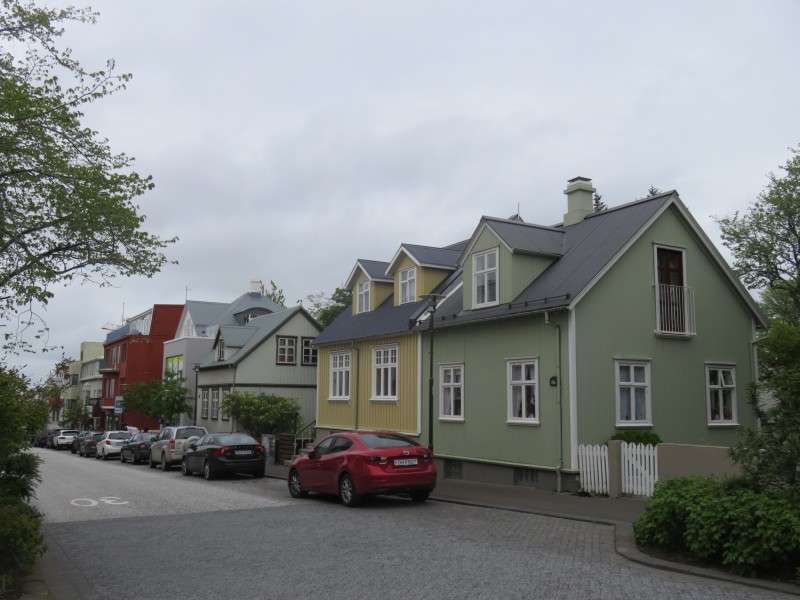
Looking up Skólavörðustígur at Hallgrimskirkja.
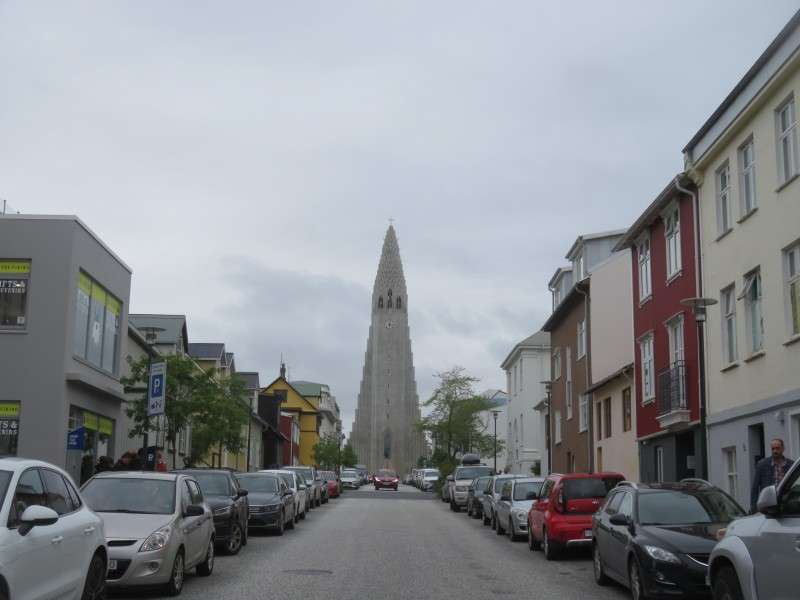
Houses on Klapparstígur at Njálsgata.
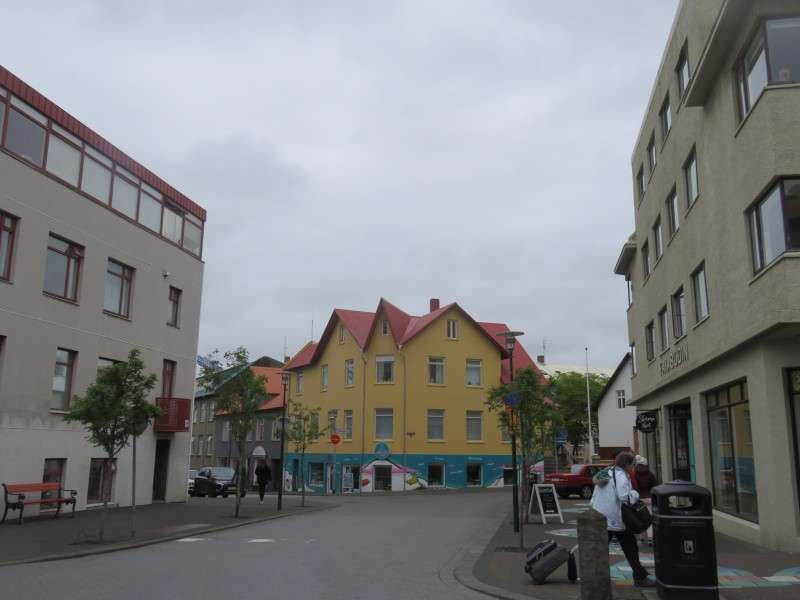
Hegningarhúsið (Central Prison), on Skólavörðustígur. The prison was built in 1873 and was originally also a courthouse. The prison closed in 2016.
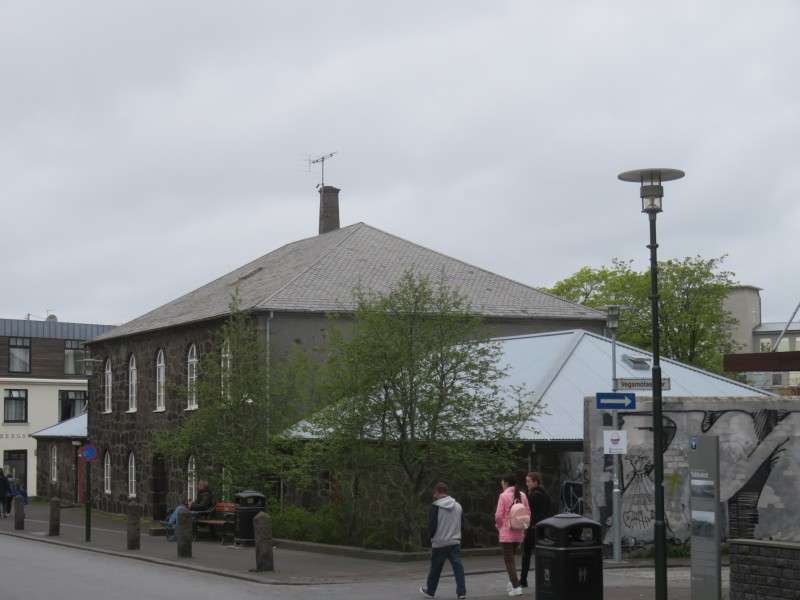
Buildings on Skólavörðustígur.

The Magnús Guðnason House, on Skólavörðustígur. The house was built in 1883. The lower floor became a store in 1928, and the rest of the building was converted in 1950.
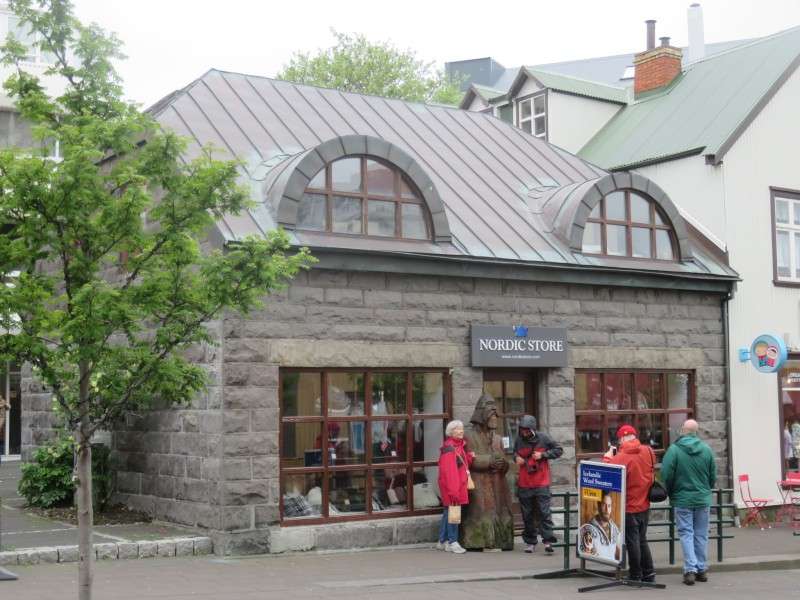
Buildings on Laugavegur at Skólavörðustígur.
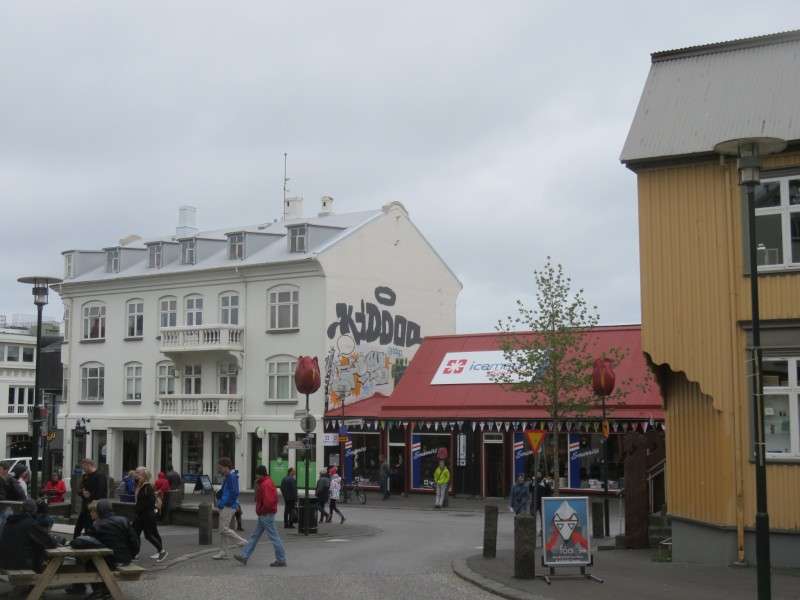
A restuarant on Bankastræti. The restaurant was built in 1892.
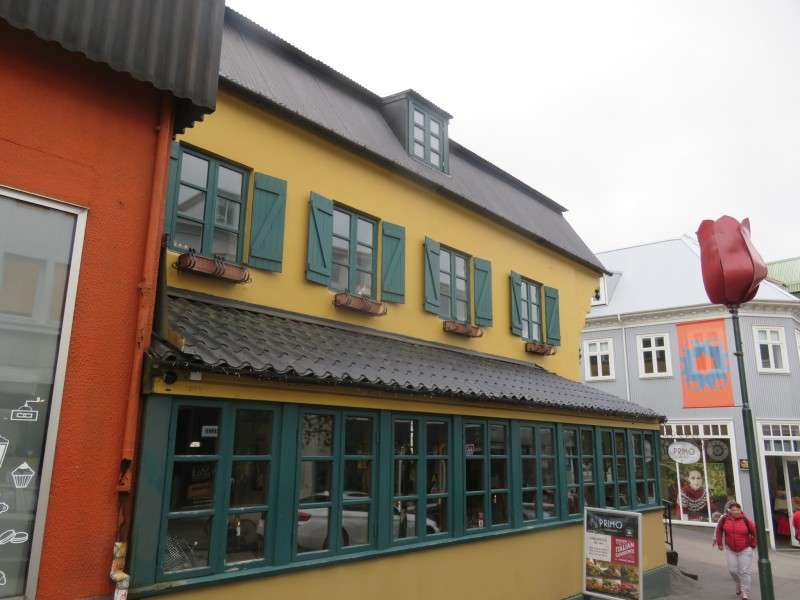
A stone building on Bankastræti.

Buildings on Ingólfsstræti. In the center is Gamla Bíó (the Old Cinema). The theater was built in 1926, and after serving as a movie theater, it became an opera house in 1980, and now hosts various live performances. On the right, at the street corner, is Alþýðuhúsið. The office building was built in 1936.
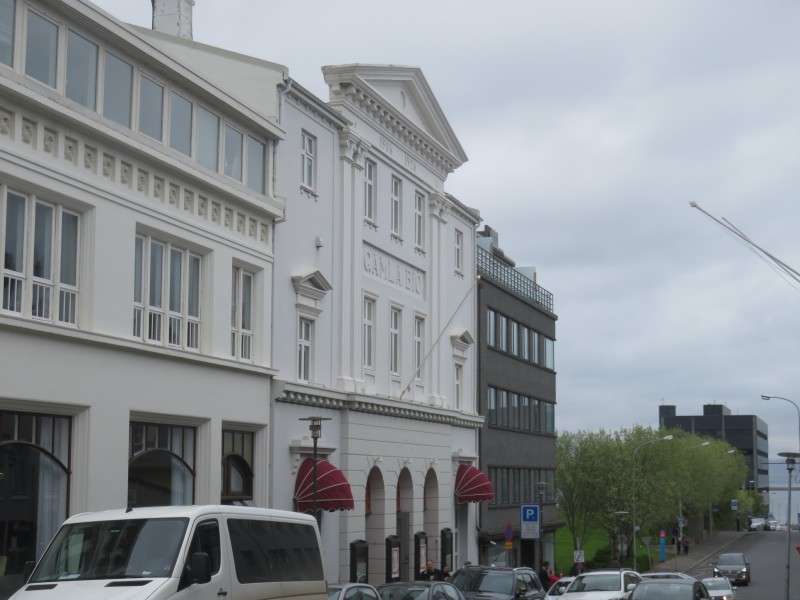
Dómhús Hæstiréttar íslands (Supreme Court of Iceland), on Lindargata at Ingólfsstræti. The structure was built in 1996.
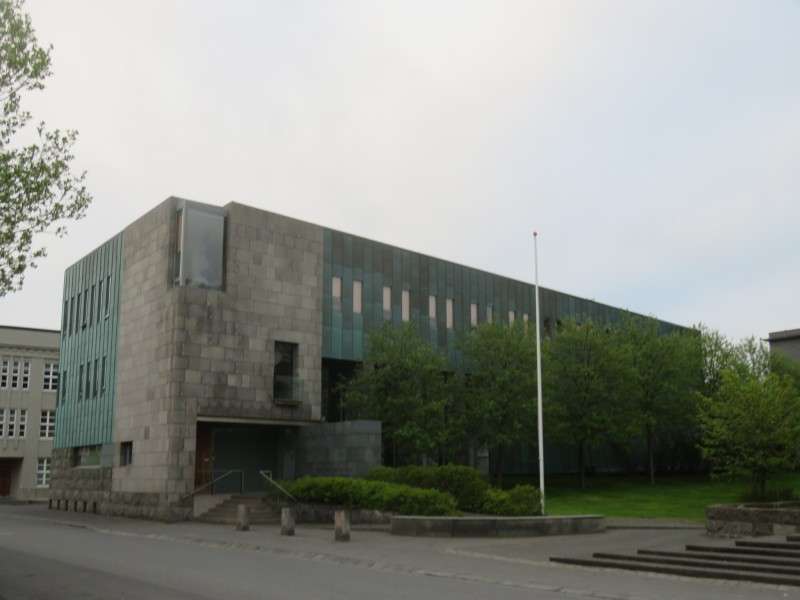
Arnarhvoll, on Lindargata. The building houses Fjármála og Efnahagsráðuneytið (Ministry of Finance and Economic Affairs), and was built in 1930.

A building on Lindargata.
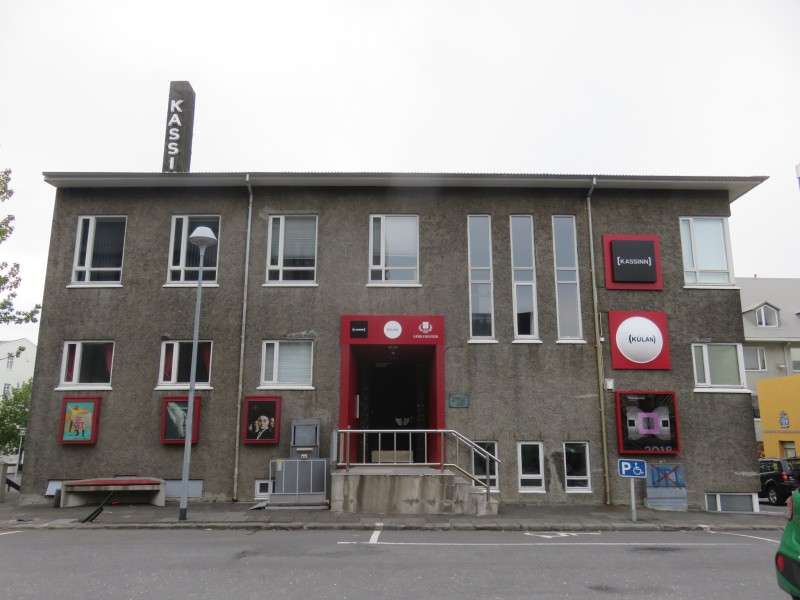
Ebenezershus, on Lindargata. The house was built in 1914.
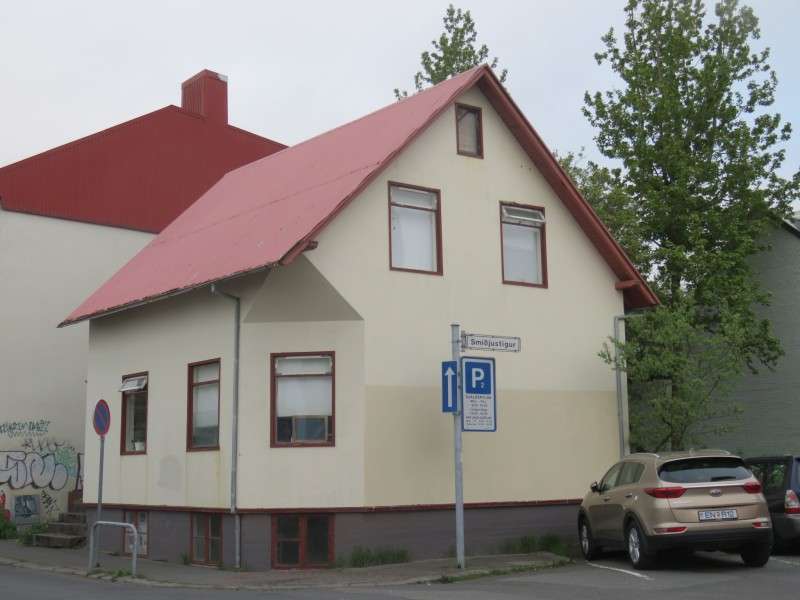
A house on Smiðjustígur.
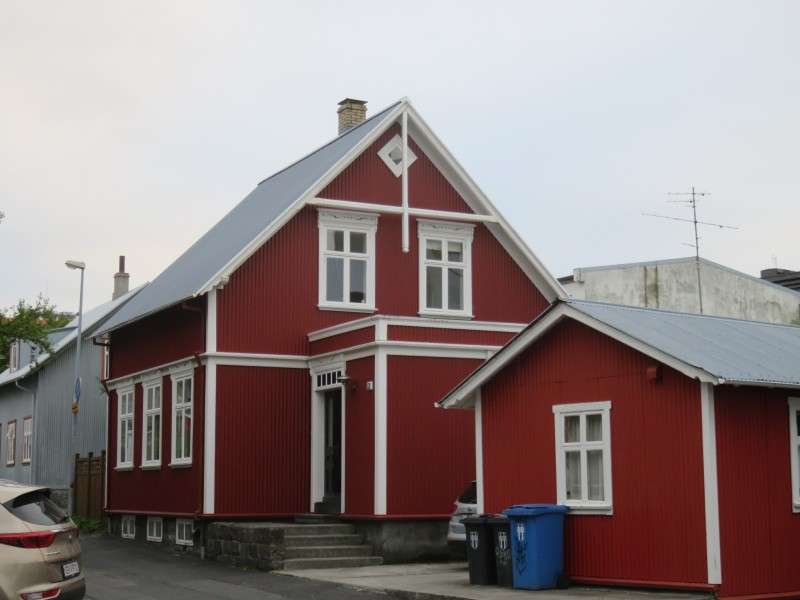
A house on Lindargata.
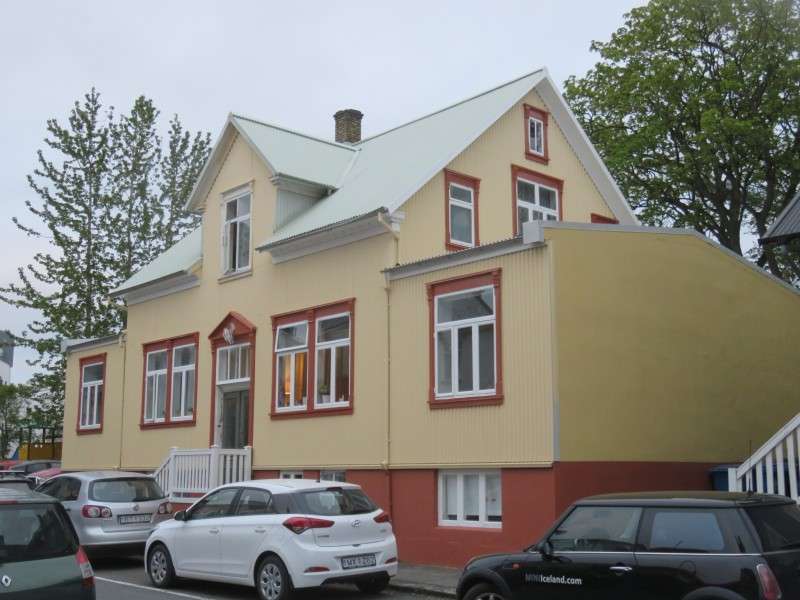
A building at Klapparstígur & Lindargata.

A house on Lindargata.
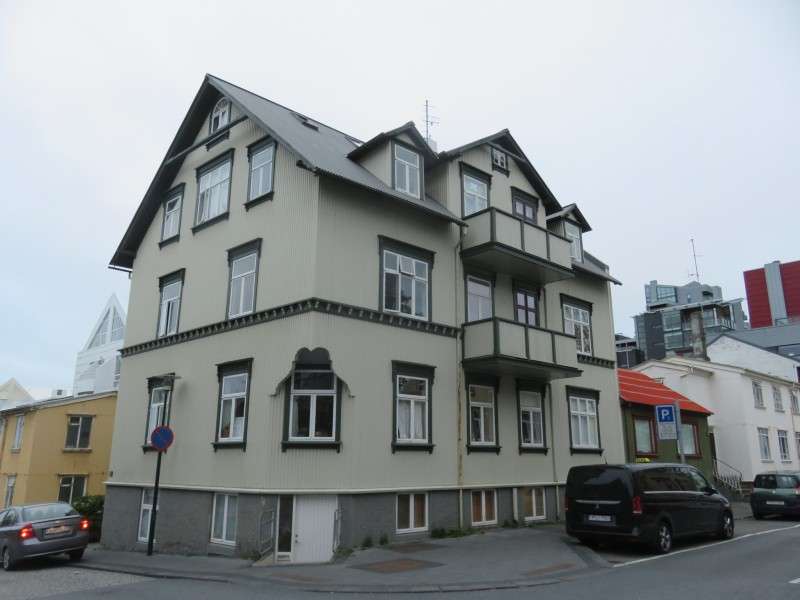
Houses on Laugavegur.
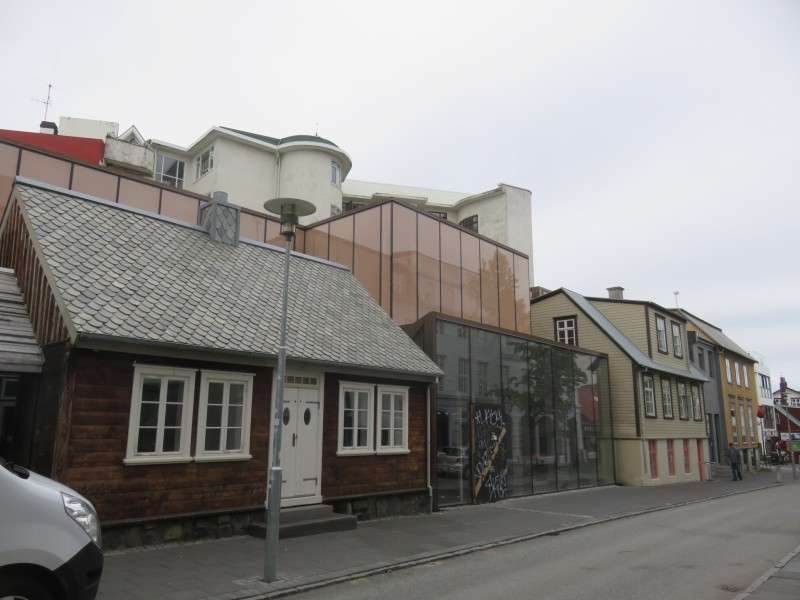
A house on Smiðjustígur.
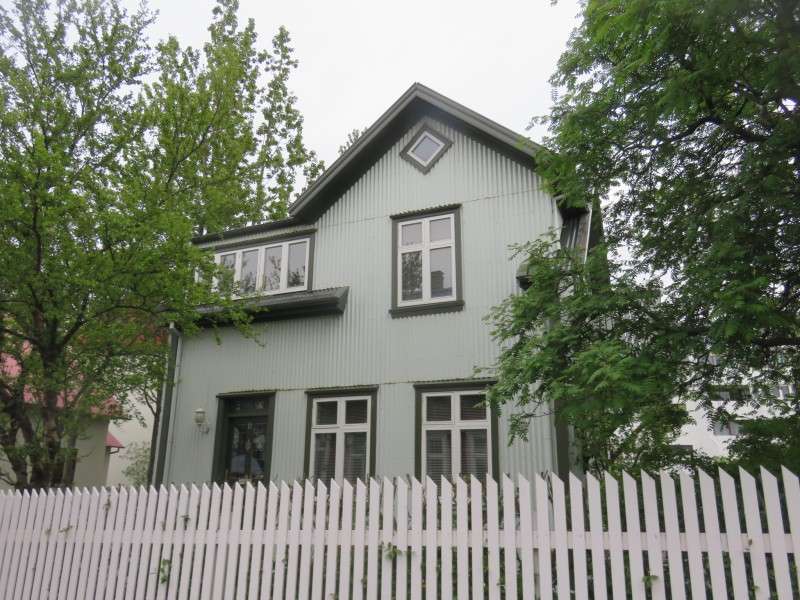
Buildings on Hverfisgata.
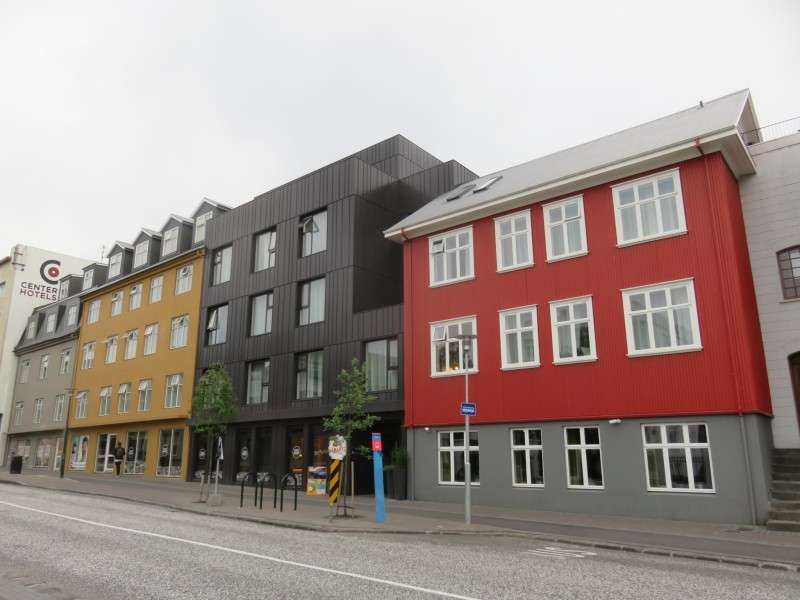
A building on Hverfisgata.
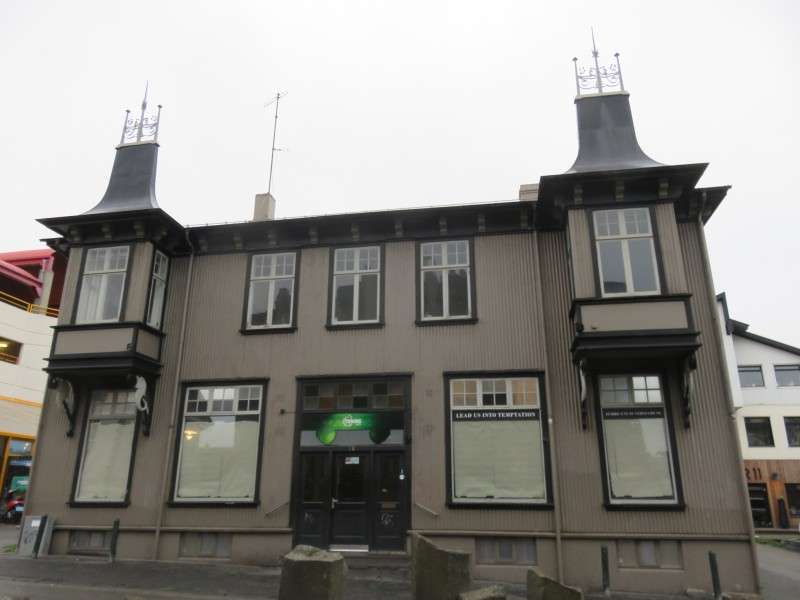
Seahorses adorn this building, evoking the seafaring history of the city.

The Danish Embassy, on Hverfisgata. The embassy was built in 1912 as a residence for Sturla and Friðrik Jónsson.
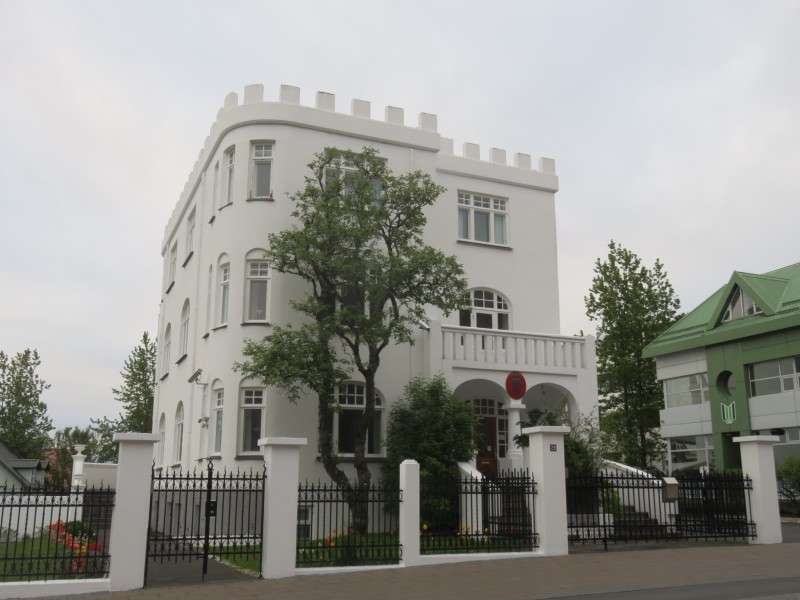
Houses and storefronts on Hverfisgata.
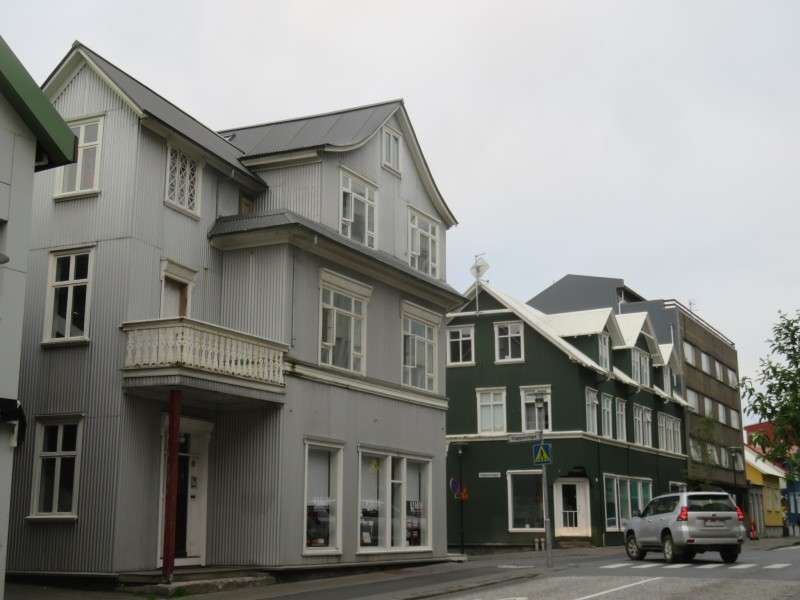
The Jón Magnússon House, on Hverfisgata. The house was built in 1912, and was the home of Magnússon, who was the Prime Minister of Iceland from 1924 to 1926. It now houses offices.
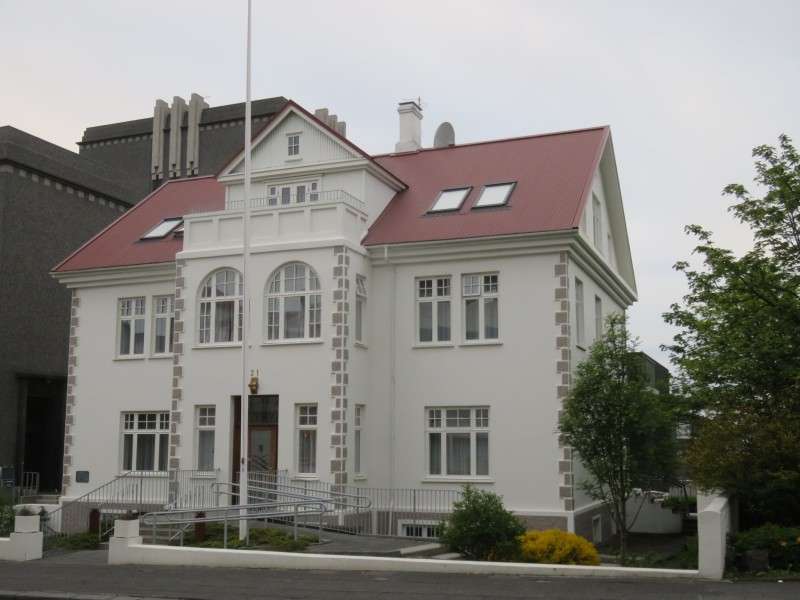
Þjóðleikhúsið (National Theatre of Iceland), on Hverfisgata. The theater was built in 1932, with the interior competed in 1950. It was designed by Guðjón Samúelsson, and was inspired by "elfin citadel" basalt columns.
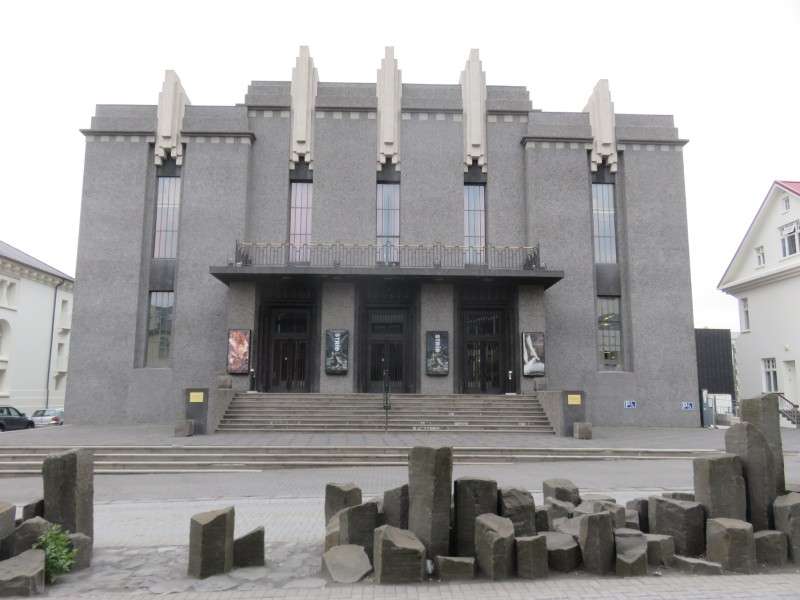
Þjóðmenningarhúsið (Culture House), on Hverfisgata. The building, once the National Library, was built in 1909. It was the last major building constructed under Danish home rule.
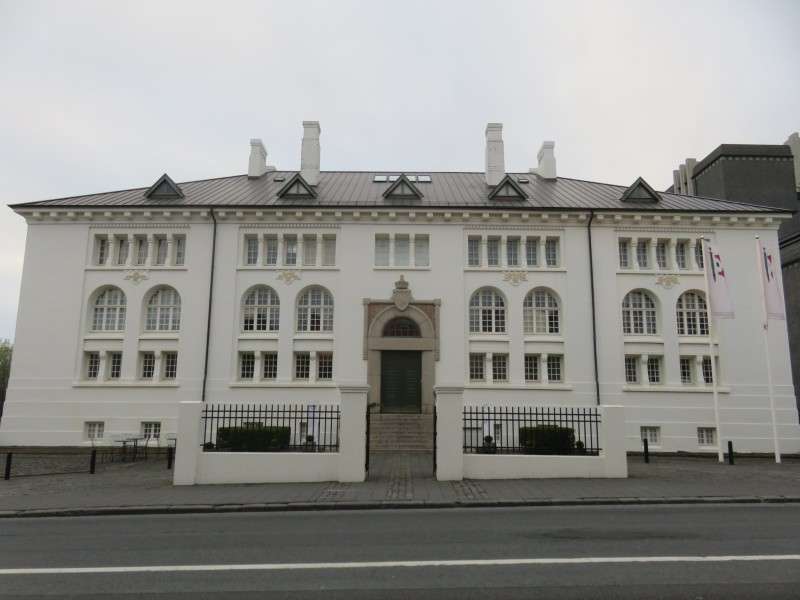
Landsbankinn headquarters, under construction along Austurhöfn.
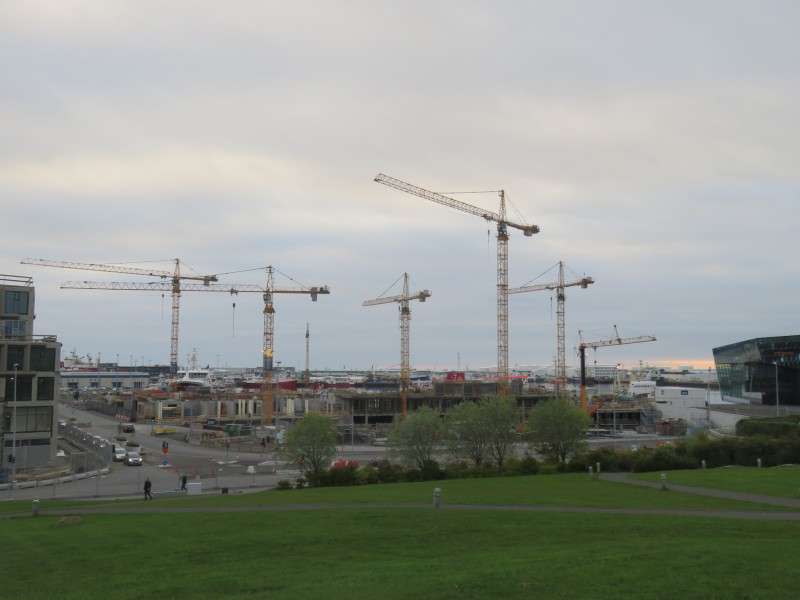
The Ingólfur Arnarson statue in Arnarhóll. The statue was designed by Einar Jónsson, and was dedicated in 1924.
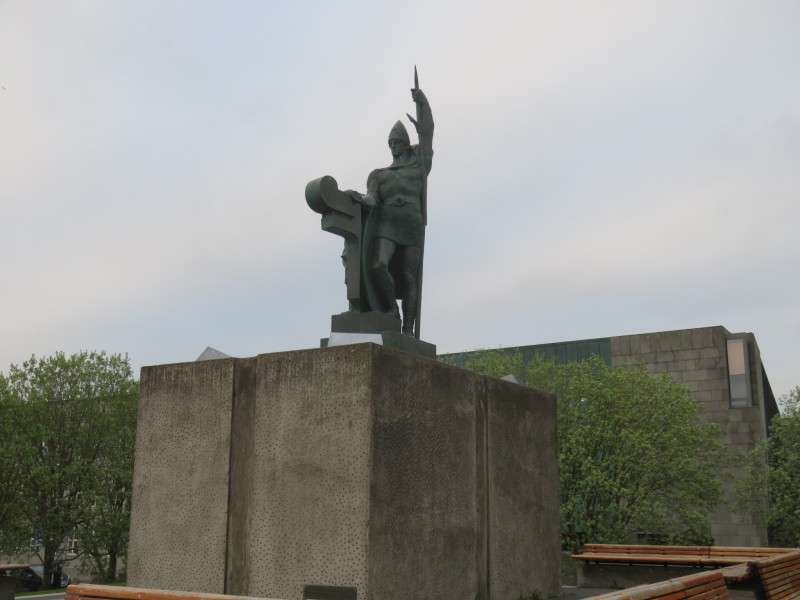
The Ingólfur Arnarson statue, in Arnarhóll square. The statue of Arnarson, the first permanent Nordic settler of Iceland, was dedicated in 1907.

A magazine kiosk in Lækjartorg. The kiosk was built in 1907.
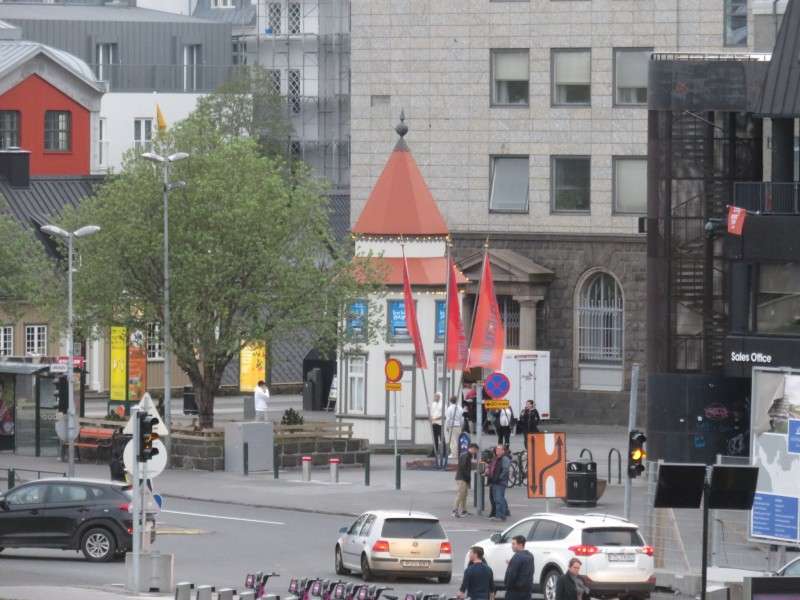
Looking up Lækjargata (Stream Street), towards Tjörnin.
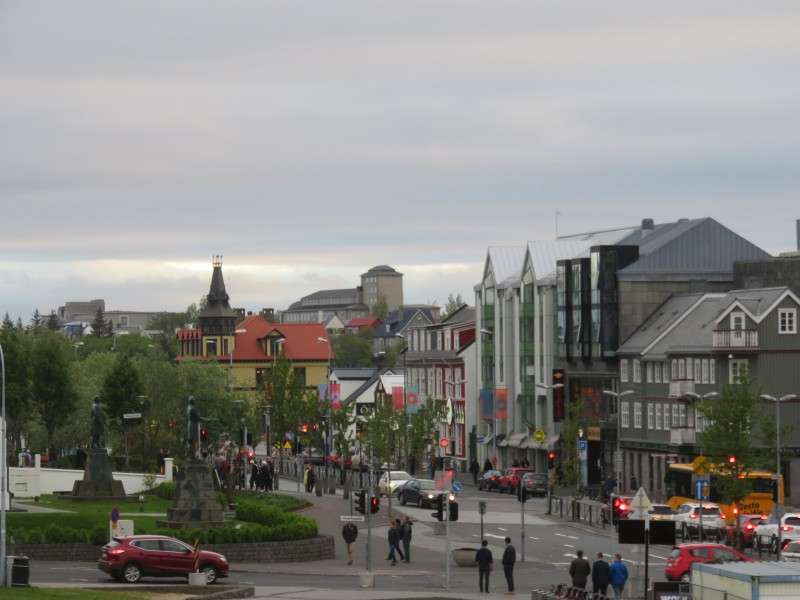
Stjórnarráðið, on Lækjargata. The structure was built in 1770 as a prison. It was the residence of the Danish governor of Iceland from 1872 to 1904, and it now functions as the Prime Minister's office.
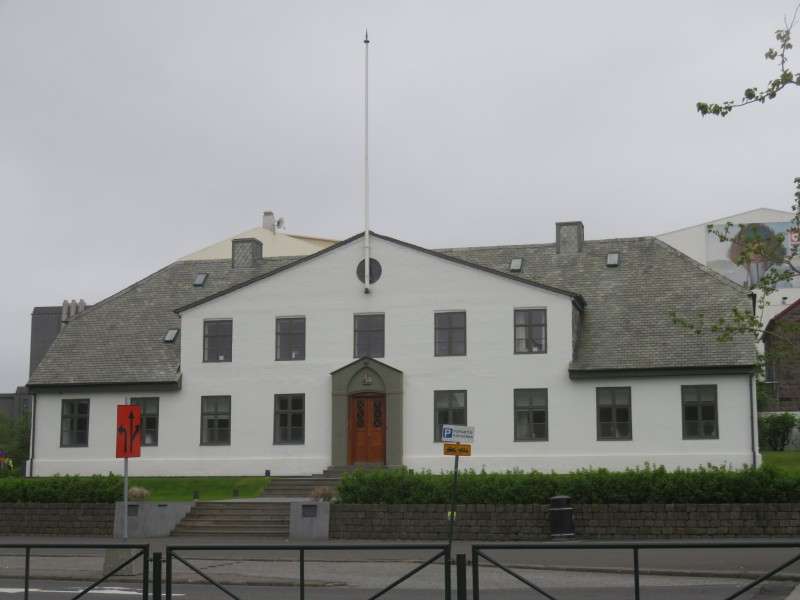
The King Christian IX statue, in front of Stjórnarráðið along Lækjargata. The statue was dedicated in 1915. Christian IX was King of Denmark from 1863 to 1906, and presided over Iceland's first constitution in 1874. The statue depicts Christian IX handing the constitution over to Icelanders.
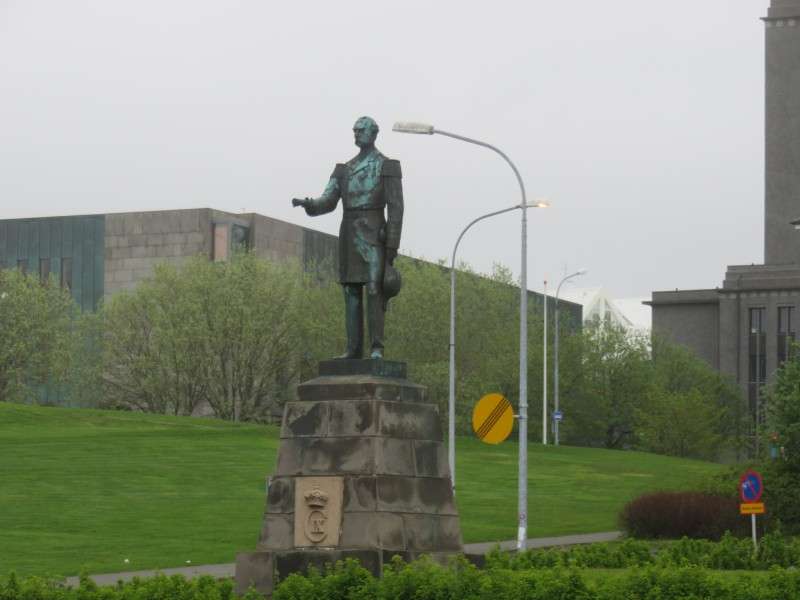
The Hannes Hafstein statue, in front of Stjórnarráðið along Lækjargata. The statue was dedicated in 1931. Hafstein was the first Minister for Iceland in the Danish Cabinet, from 1904 to 1909. He was also elected the President of the AlÞingi in 1912, before becoming Minister for Iceland later that year until 1914.

Héraðsdómur Reykjavíkur (District Court of Reykjavík), on Lækjargata at Austurstræti. The original stone structure was built in 1906 for the Bank of Iceland. The top three stories were added in 1962. The District Court moved into the building in 1992.
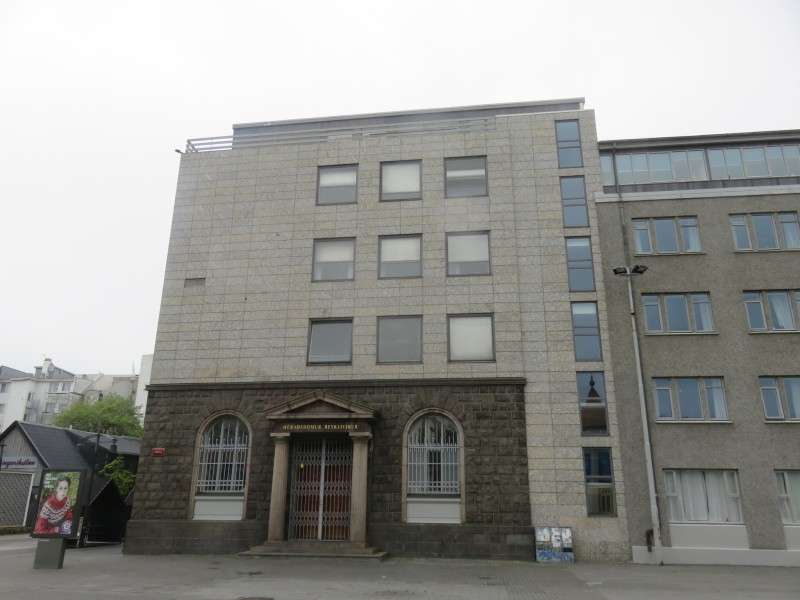
Buildings of Bernhöftstorfan. On the left is Gimli, built in 1905 as the home of Mayor Knud Zimsen. On the right is the Stefán Gunnlaugsson House, built in 1838 and likely prefabricated in Norway.
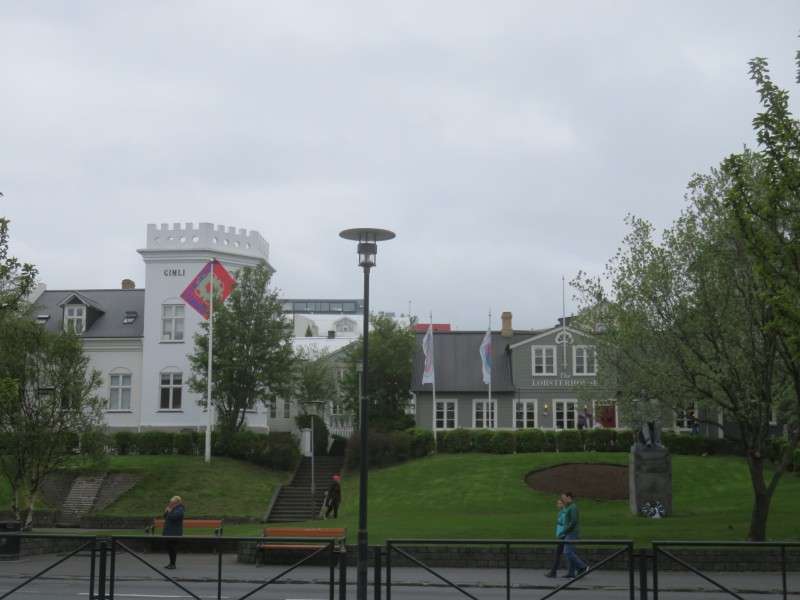
Gimli, on Bernhöftstorfan, off of Lækjargata. The house was built in 1905, and was once the home of Mayor Knud Zimsen.
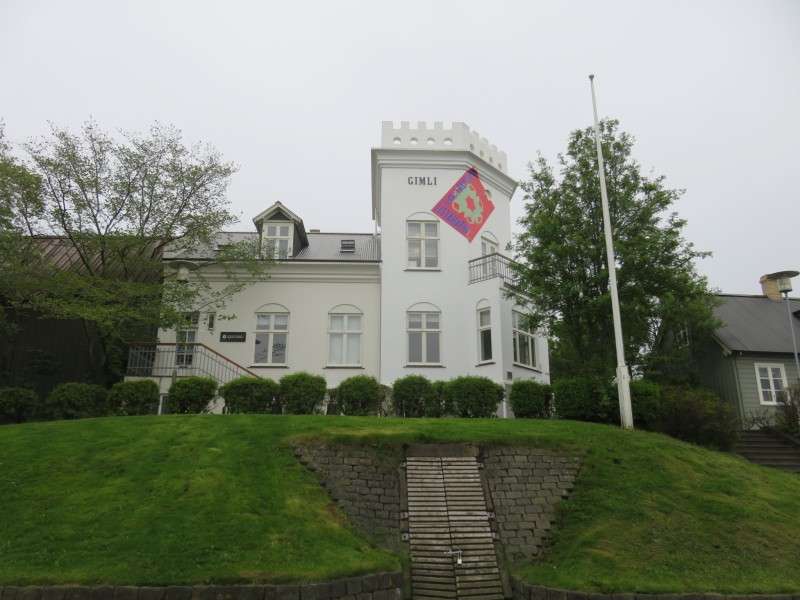
Menntaskólinn í Reykjavík (Reykjavík Secondary School), on Lækjargata. The school was built in 1846. Alþingi, the Icelandic Parliament, met here from 1848 to 1881, after being re-established in 1847 by Danish royal decree and moved to Reykjavík from Þingvellir, before moving to its current building.
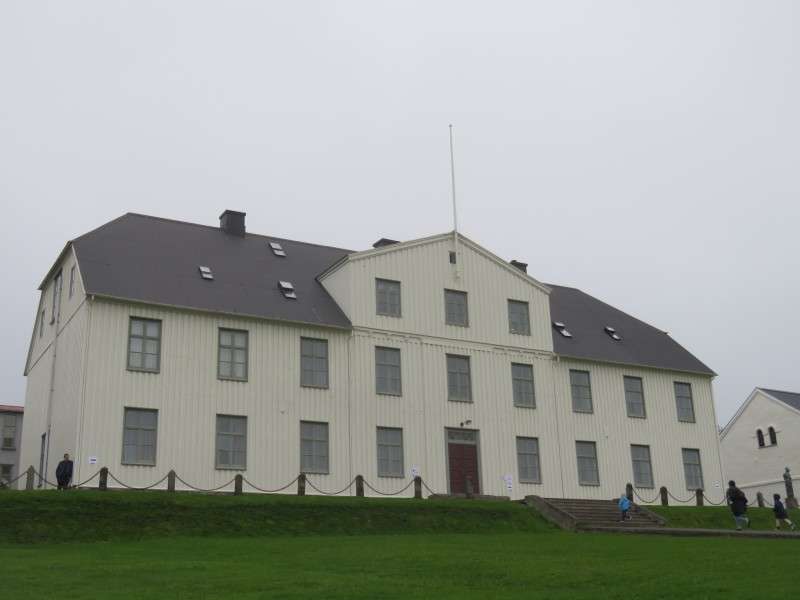
The Iðnaðarmannahúsið (Craftsmen's House), on Lækjargata. The structure was built in 1906, and housed the Reykjavík Technical School on one side, and the Agricultural Society on the other side.
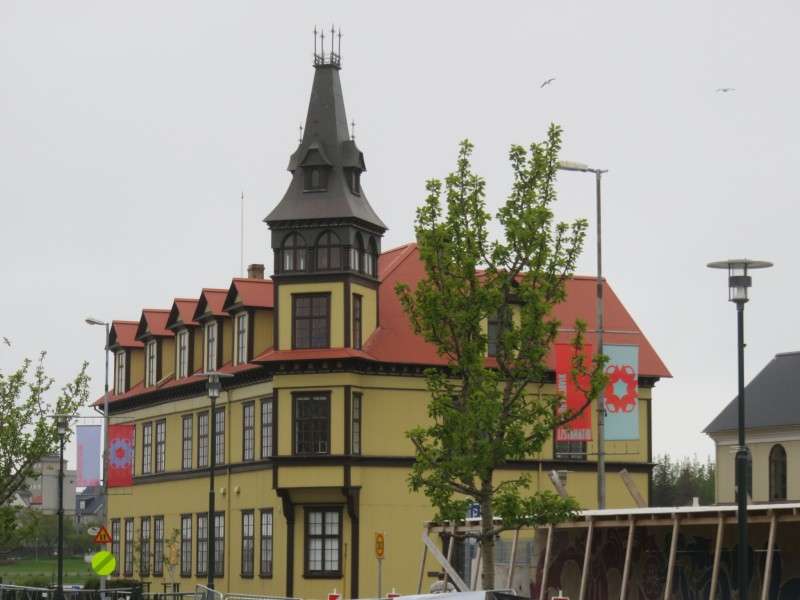
Fríkirkjan í Reykjavík (Free Lutheran Church in Reykjavík), on Fríkirkvegur. The church was built in 1904.
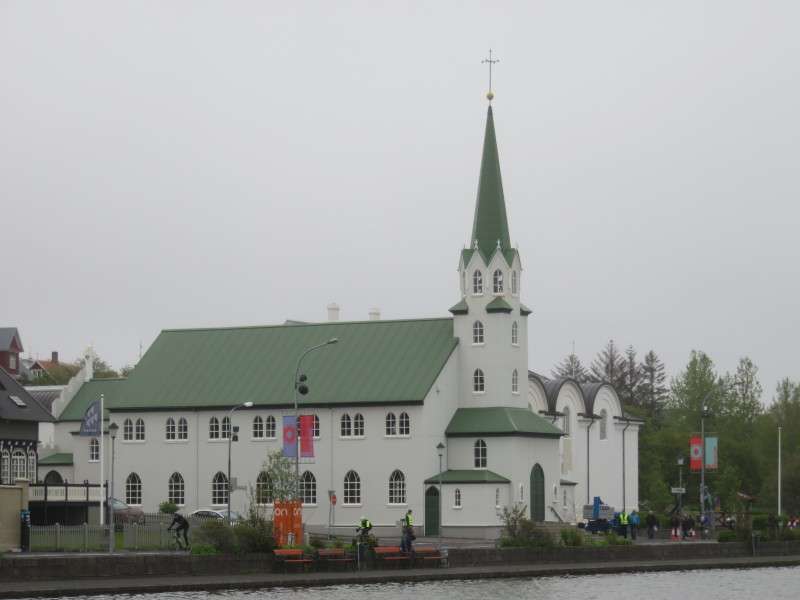
Listasafn íslands (National Gallery of Iceland), on Fríkirkvegur. The structure was originally built in 1916 as an ice storage facility for Herðubreið, a fishing company, and was designed by Guðjón Samúelsson. It was later a dance hall until gutted by fire in 1971. It became the National Gallery of Iceland in 1987.
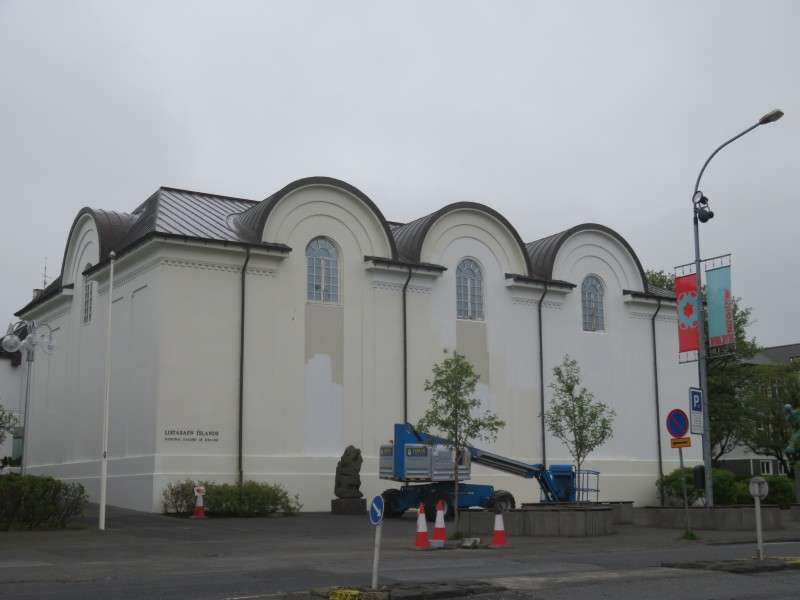
A house on Laufásvegur, built in 1918.
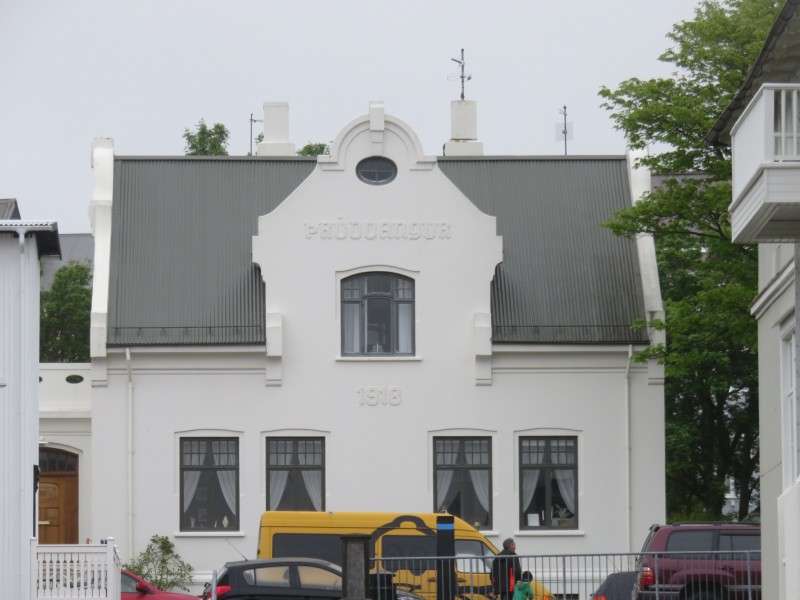
A house on Fríkirkvegur.
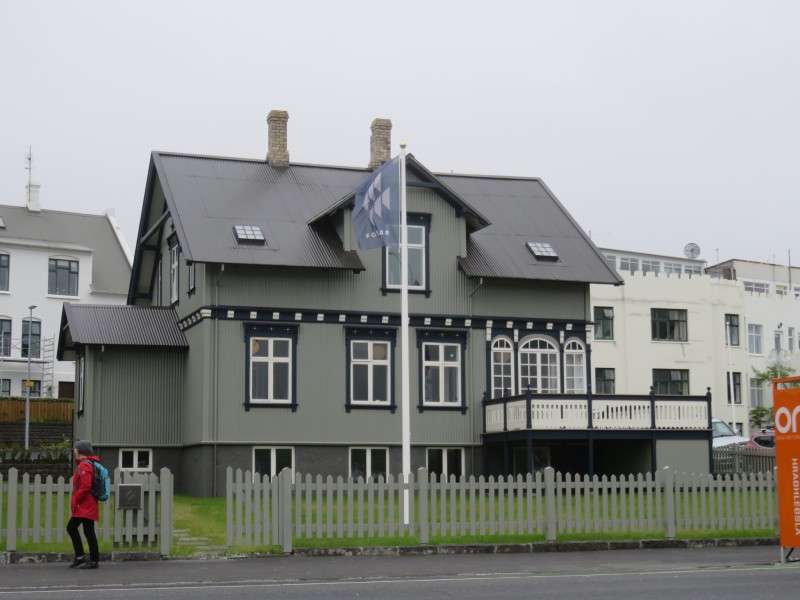
The Thor Jensen House, on Fríkirkvegur. The house was built in 1908, and was the most elaborate house in Reykjavík when completed. It now houses the offices of the Reykjavík City Council.
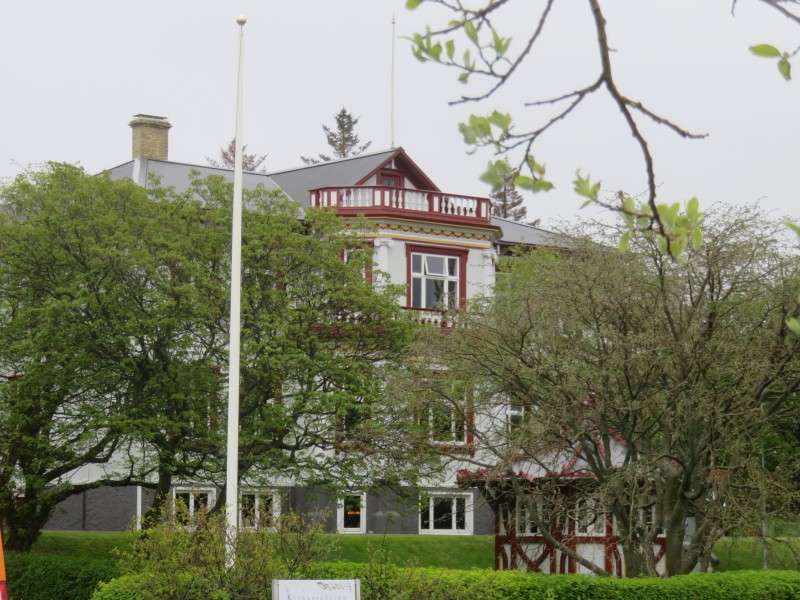
The Hljómskálinn Pavilion, on Skothúsvegur. The bandstand was built in 1923 for the Reykjavík Brass Band.
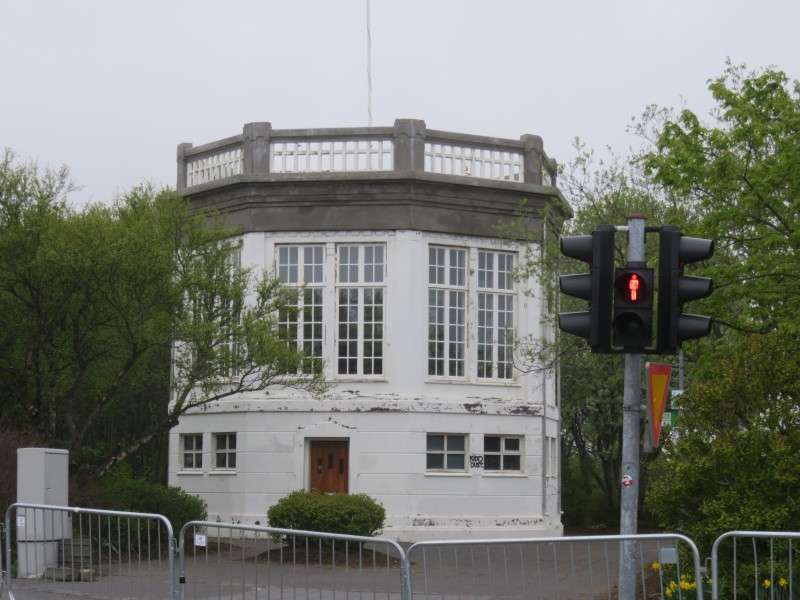
"The Spell Broken", in Hljómskálagarður Park on the west bank of Tjörnin. The statue was dedicated in 1916 and was designed by Einar Jónsson.
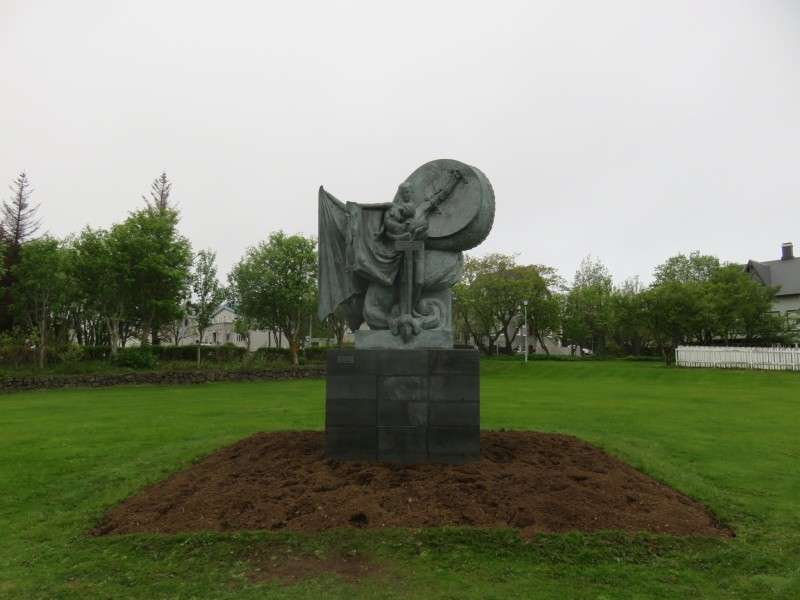
The statue of Ólafur Thors, in Hljómskálagarður Park. The statue of the former Prime Minister of Iceland was dedicated in 1968.

Behind the Ólafur Thors statue, across Tjarnargata, is the Reception House.
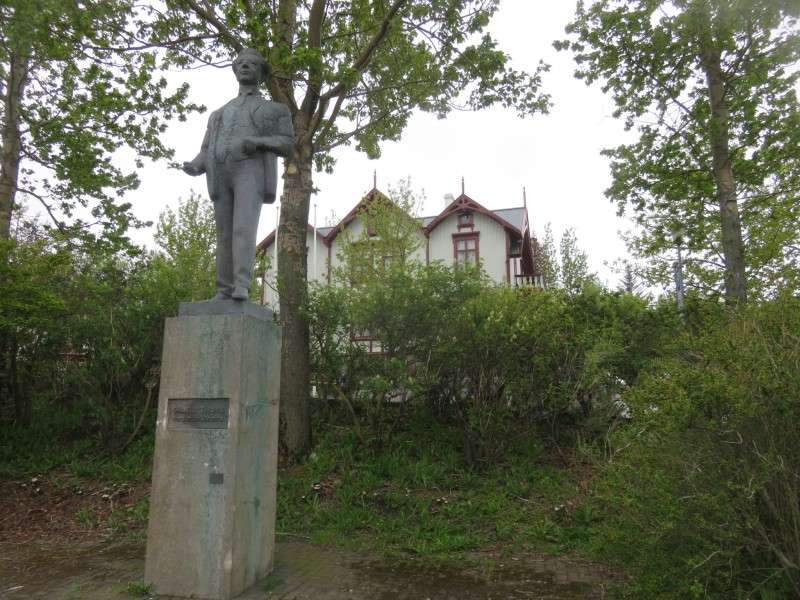
The Reception House, on Tjarnargata. The house was built in 1892 by Hans Ellefssen, a Norwegian whaler, in Solbakki in the Westfjords of northwestern Iceland. The house was moved to Reykjavík in 1906 after being sold to Hannes Hafstein, the first Minister for Iceland in the Danish Cabinet. The house served as the official Minister's residence until 1943.
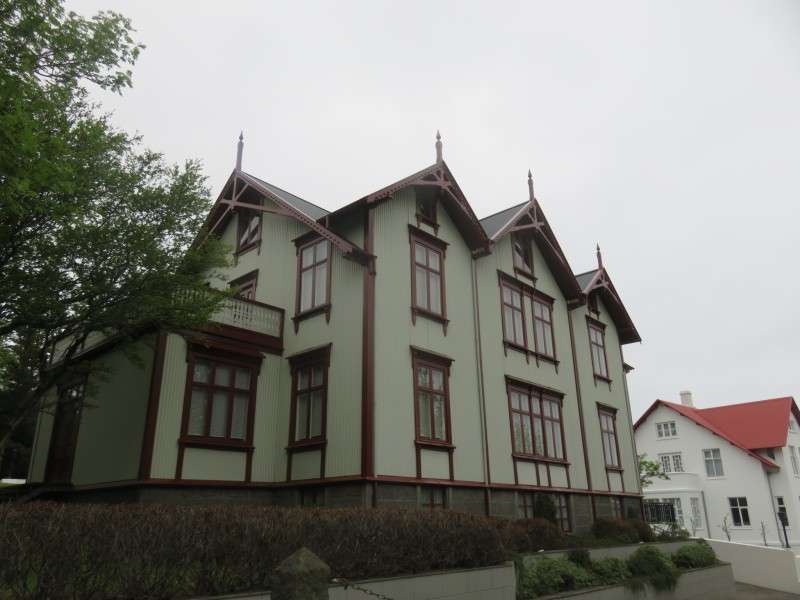
A house on Tjarnargata (Pond Street).
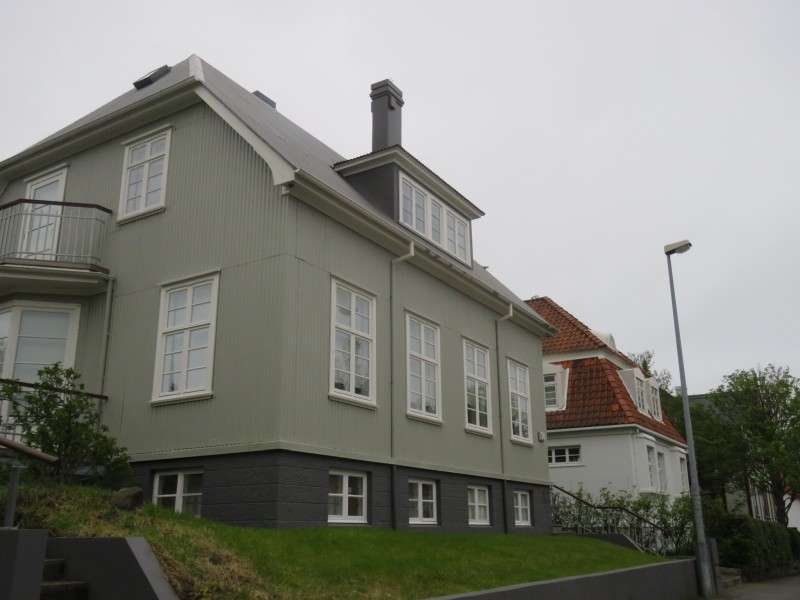
A house on Suðurgata (South Street), built in 1906.

A house on Tjarnargata, built around 1908.

Houses on Garðastræti (Park Street).
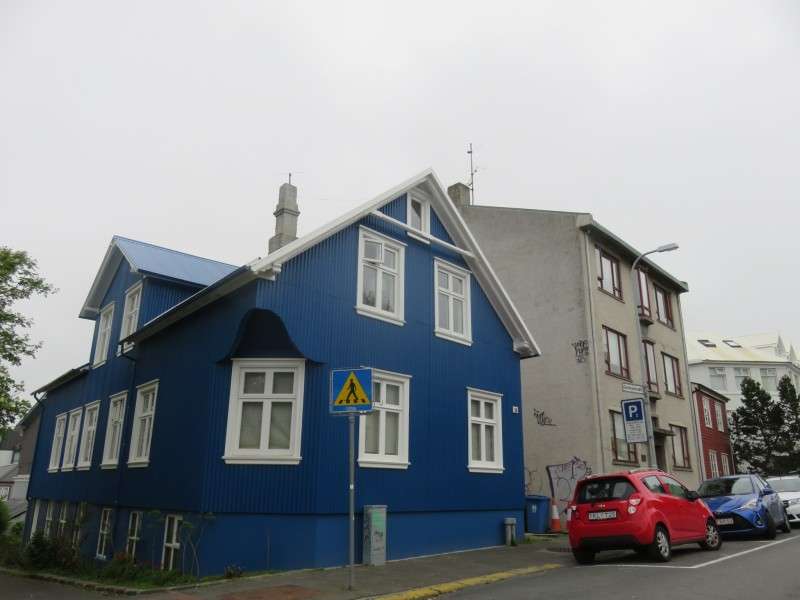
A house on Grjótagata, built in 1890. The street and surrounding block is the oldest neighborhood in Reykjavík, known as Grjótaþorp (Grjóti Village, or Rocky Village).
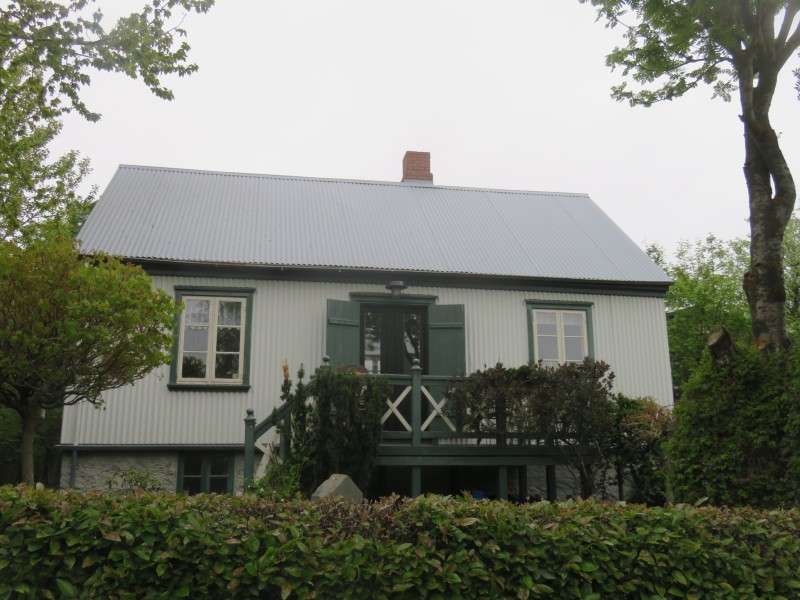
A house on Grjótagata. The house was built in 1881.
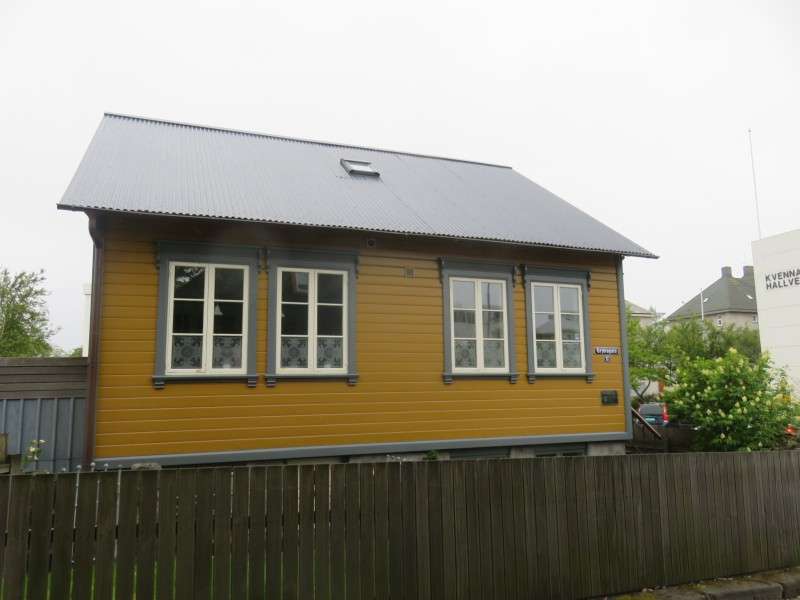
Vaktarabærinn, on Garðastræti. The house was built in 1845 as a storage shed, and was later converted into a residence. Icelandic poet Sigvaldi Kaldalóns was born in the house in 1881.
